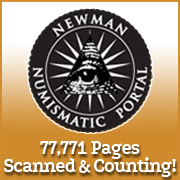
About UsThe Numismatic Bibliomania Society is a non-profit organization devoted to the study and enjoyment of numismatic literature. For more information please see our web site at coinbooks.org SubscriptionsThose wishing to become new E-Sylum subscribers (or wishing to Unsubscribe) can go to the following web page link MembershipThere is a membership application available on the web site Membership Application To join, print the application and return it with your check to the address printed on the application. Membership is only $20 to addresses in the U.S., $25 for First Class mail, and $30 elsewhere. For those without web access, write to: Terry White, Treasurer
AsylumFor Asylum mailing address changes and other membership questions, contact Terry at this email address: terrywhite5475@yahoo.com SubmissionsTo submit items for publication in The E-Sylum, just Reply to this message, or write to the Editor at this address: whomren@gmail.com BUY THE BOOK BEFORE THE COINSale Calendar |
- WAYNE'S WORDS: THE E-SYLUM DECEMBER 6, 2015
- JACK COLLINS WRITER'S AWARD PRESENTED TO ELEONORA GIAMPICCOLO
- KOLBE & FANNING 2016 NEW YORK BOOK AUCTION HIGHLIGHTS
- NUMISMATIC LITERATURE IN VAUCTIONS SALE #318
- DAVIS OFFERS SEVERAL NEW SPINK TITLES
- E-SYLUM EDITOR INTERVIEWED BY ABC NEWS
- THE SAMUEL H. AND HENRY CHAPMAN CLIENT LIST
- RESEARCHERS WELCOME THE NUMISMATIST DIGITAL ARCHIVE
- COINVAC DIGITIZES ITS 100TH INTERNET AUCTION SALE
- ZYRUS PRESS EXITS NEW BOOK PUBLISHING BUSINESS
- BOOK REVIEW: THE COINAGE OF THE IRANIAN HUNS
- BOOK REVIEW: OLYMPIC MEDALS AND COINS
- UPDATE ON DAVID LANGE'S RESEARCH PROJECTS
- EXHIBIT TO HIGHLIGHT MEDALS OF CHRISTIAN GOBRECHT
- ERIC NEWMAN INTERVIEWED BY LOCAL TV STATION
- NOTES FROM E-SYLUM READERS: DECEMBER 6, 2015
- SLOSS PHOTO IDENTIFICATIONS SOUGHT
- ROBERT WOOD MERCER (1840-1894)
- REPEAT AFTER ME: GRAIN = CORN; CORN = MAIZE
- QUIZ ANSWER: MARK TWAIN AT THE SAN FRANCISCO MINT
- GREENBACKS, GOLD AND AMERICAN CAPITALISM
- EDMONTON AMALGAMATION CELEBRATION MEDAL
- HIGHLIGHTS FROM ARCHIVES DECEMBER 14, 2015 SALE
- CNG DR. LAWRENCE A. ADAMS PART III SALE HIGHLIGHTS
- CNG TRITON XIX SALE HIGHLIGHTS
- SAN JOSE GALLEON FOUND: THE HOLY GRAIL OF SHIPWRECKS
- FINDING SHIPWRECKS IS GETTING EASIER AND HARDER
- HARVEY STACK REMEMBERS THE 1940S
- DEALER MARK YAFFE SENTENCED TO PRISON
- THE ROYAL MINT’S NEW £50 COIN
- THE HAPPY COUPLE ON CZECHOSLOVAK MONEY
- CHINA RELEASES SPACE PROGRAM BANKNOTES AND COINS
- BANKNOTE PRINTER DE LA RUE ANNOUNCES CUTBACKS
- COUNTY INTAGLIO PRINTING PAPER SHORTAGE ENDS
- UGANDA TO DEPORT COUNTERFEITER TO US
- ARTICLE HIGHLIGHTS SANTA CLAUS BANKNOTES
- COMPANY BUILDS AUTOMOBILE VENDING MACHINE
Click here to access the complete archive
To comment or submit articles, reply to whomren@gmail.com
WAYNE'S WORDS: THE E-SYLUM DECEMBER 6, 2015

New subscribers this week include: Michael Kohn. Welcome aboard! We now have 1,904 subscribers.
I wasn't able to get all the way through my massive pile of E-Sylum email this week, so my apologies to those I haven't been able to respond to. On the other hand, we have all our Christmas decorations up, I won a game of Monopoly, and two of the three Homren kids won their basketball games this weekend, one by a whopping 65-point margin.
This week we open with an NBS award presentation, updates on two numismatic literature sales, a word from Charlie Davis, and a surprise interview by ABC News. Next up are three articles on recent numismatic digitization, and two book reviews.
Other topics include Zyrus Press, Christian Gobrecht medals, Eric Newman, Robert Mercer, Mark Twain, James O. Sloss, Mark Yaffe, banknote printer De La Rue, and Santa Claus notes.
To learn more about the Vatican coin cabinet, Haym Salomon, the Chapman client list, CoinVac, the Iranian Huns, Jacob Shapiro, the Edmonton amalgamation celebration medal, the Zodiac Mohur, the San Jose galleon, Harold Bareford, and the happy couple on Czechoslovak money, read on. Have a great week, everyone!
Wayne Homren
Editor, The E-Sylum
JACK COLLINS WRITER'S AWARD PRESENTED TO ELEONORA GIAMPICCOLO
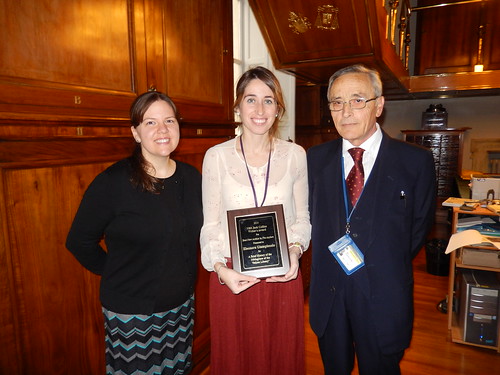
I was in Rome, Italy, recently for a work trip and had the opportunity to present Eleonora Giampiccolo with her NBS Jack Collins Writer's Award for her article in The Asylum about the Vatican coin cabinet. Here is a photo of me with Eleonora inside the Vatican coin cabinet where she works (her full title: Dr Eleonora Giampiccolo, Curator responsible for the Vatican Medagliere). We are also pictured with Prof. Giancarlo Alteri, former keeper of the Vatican Medagliere and Director of the Coin cabinet of the Veneranda Biblioteca Ambrosiana. Eleonora was thrilled and honored to receive the award!

KOLBE & FANNING 2016 NEW YORK BOOK AUCTION HIGHLIGHTS
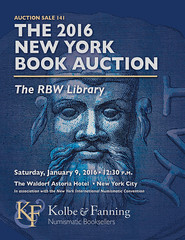 Kolbe & Fanning’s 2016 New York Book Auction features remarkable rarities and important works from around the world. With the celebrated
RBW Library on Roman Republican coins serving as its foundation, the sale’s offerings span the numismatic spectrum. Some highlights include:
Kolbe & Fanning’s 2016 New York Book Auction features remarkable rarities and important works from around the world. With the celebrated
RBW Library on Roman Republican coins serving as its foundation, the sale’s offerings span the numismatic spectrum. Some highlights include:
- Lot 42: the very rare catalogue of the Carlos de Beistegui collection
- Lot 54: the 1522 Aldine Press edition of Budé’s masterwork De asse
- Lot 169: a complete bound set of the Berliner Blätter für Munz-, Siegel- und Wappenkunde
- Lot 206: a handsome copy of Fulvio Orsini’s 1577 Familiae Romanae
- Lots 324 through 327: the RBW collection of nearly 1,000 numismatic offprints arranged in four lots
- Lots 368 and 378: the massive catalogues of the Gustave Dreyful reliefs & plaquettes and Renaissance medals
- Lot 399: a very rare original copy of Prou on Carolingian coins
- Lot 401: Ricaud de Tiregale’s classic 1772 work on Russian medals
- Lot 418: Duke Karl Bernhard’s 1828 memoirs of traveling in America, including visits to the U.S. Mint and other numismatic entries
- Lot 427: S.H. Chapman’s 1913 catalogue of the John P. Lyman collection, with plates.
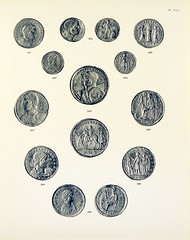
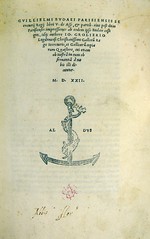
Lots 42 and 54
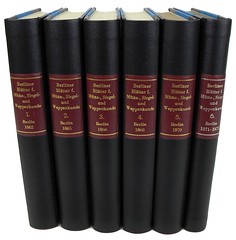
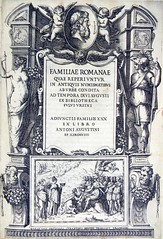
Lots 169 and 206

Lot 324
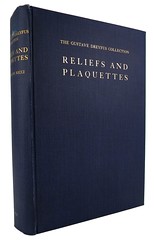
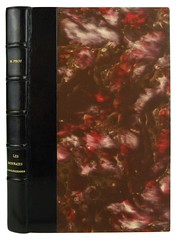
Lot 368 and 399
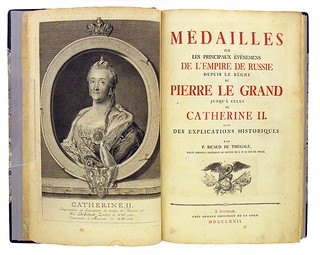
Lot 401
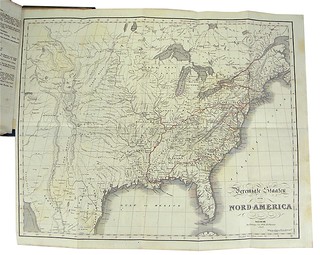
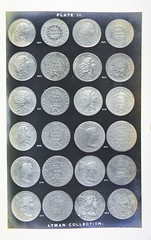
Lots 418 and 427
Over 450 lots are included in the sale, a PDF of which has been posted on the K&F website at numislit.com. Printed catalogues are being mailed this week to current customers, and the full illustrated online catalogue will be posted to our online bidding platform at auction.numismlit.com in about a week. The sale will take place on Saturday, January 9, 2016, beginning at 12:30 p.m. eastern time, at the Waldorf-Astoria Hotel in Manhattan in conjunction with the 2016 New York International Numismatic Convention.
More information on the sale will be included in future announcements.
Kolbe & Fanning Numismatic Booksellers LLC is a licensed auction firm in the State of Ohio and is conducting the sale in conjunction with Marissa Russell, auctioneer. For more information, please see the Kolbe & Fanning website at www.numislit.com or email David Fanning at df@numislit.com. We look forward to your participation.
To read the earlier E-Sylum article, see:
KOLBE & FANNING 2016 NEW YORK BOOK AUCTION ANNOUNCED
(www.coinbooks.org/esylum_v18n48a02.html)
NUMISMATIC LITERATURE IN VAUCTIONS SALE #318
Kerry Wetterstrom writes:
Something of interest for the readers of E-Sylum: there is currently an offering of 158 lots of Greek and Roman numismatic literature on VAuctions.com. The books are part of their Auction 318, and the sale closes on Tuesday, December 15th, at noon.
To read the complete article, see:
Sale 318 Triskeles Auctions Books & Publications
(www.vauctions.com/APViewInCat.asp?ID=18)
THE BOOK BAZARRE
DAVIS OFFERS SEVERAL NEW SPINK TITLES
Spink has published a number of new titles during the 4th quarter all of which are available on our web site.
- Coins of Scotland, Ireland, and the Islands (Jersey, Guernsey, Man & Lundy) Including Anglo-Gallic Coins $65.00
- Medieval Coins of Bohemia, Hungary, and Poland $70.00
- English Silver Coinage Since 1649 $65.00
- Islamic Coins & Their Values. The Medieval Period $65.00
- Antioch and Jersusalem: The Seleucids and Maccabees in Coins $48.00
- An Introduction to the Coinage of the Empire of Trebizond $30.00
- London Mint of Constantius & Constantine $75.00
- Studies in Ancient Coinage in Honor of Andrew Burnett $80.00
And speaking of Andrew Burnett, his long anticipated Roman Provincial Coinage III; Nerva, Trajan and Hadrian is also available: $300.00
The 51st edition of the Coins and England & The U.K. will be available first at the New York International Convention January 7
Charles Davis
P.O. Box 1
Wenham, MA 01984
Tel: (978) 468 2933
www.numisbook.com

E-SYLUM EDITOR INTERVIEWED BY ABC NEWS
I remembered that story and quickly looked it up in our E-Sylum archive. There were actually two articles, published in 2012. See the links below to read them. Soon I was on the phone with reporter Jordyn Phelps. Below is an excerpt from the story published later that day. For reference, first is an image from the first E-Sylum article, originally published on Snopes.com. -Editor
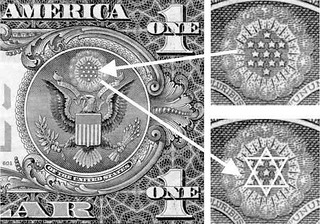
Addressing the Republican Jewish Coalition today, Republican presidential candidate Dr. Ben Carson told a story about how the Star of David came to be on the U.S. dollar bill.
Only one problem: There’s no Star of David on the dollar bill.
Carson was telling the story of wealthy Jewish merchant Haym Salomon, who is said to have been a major financier of George Washington’s troops during the Revolutionary War.
"Salomon gave all his funds to save the U.S. Army and, some say, no one knows for sure, that’s the reason there’s a Star of David on the back of the one dollar bill," Carson said in Washington, D.C.
There is a conspiracy theory that a design of stars arranged above the eagle on the U.S. seal printed on the bill forms a Jewish star and that this was done as a way to thank Salomon for his generosity.
But the Numismatic Bibliomania Society’s Wayne Homren says there’s no evidence to suggest any truth to support the theory that the stars were intentionally arranged to represent the Jewish star, let alone that it was done in Salomon’s name.
“If you squint, you can say there’s some resemblance but that certainly was not the intention of the designers, that we’re aware,” Homren told ABC News.
The Carson campaign has responded to the ABC News story, to say that Dr. Carson was re-telling a story of a common myth and not asserting it as fact.
"What should be noted is that American history is chock-full of legends and lore, many true, and many more apocryphal. Dr. Carson repeated one of these common myths about the six-point star on the reverse of the dollar bill," Deputy Communications Director Ying Ma said in an email. "He was careful to note, however, that the story was unconfirmed, saying only that some believe this, though 'no one knows for sure.' We may never know why the origin of the six-point star on the bill, but it should not distract from Dr. Carson’s greater message, which is that we should always remember and honor the important role the American Jewish community has played in forging this great nation."
The quotes are pretty accurate as far as they go, but none of my qualifying statements were included, so it comes off sounding like I led a team of researchers who scoured the archives in search of evidence. I did do a quick check after returning home. I have two great books on the Great Seal of the U.S. Solomon is not listed in the index to Patterson and Dougall's The Eagle and the Shield. I also have Harry Bass' copy of Cigrand's Story of the Great Seal of the United States. but it doesn't have an index. If digitized versions exist we could search the text for references to be sure.
I told the reporter about U.S. Mint engraver Robert Scot and Bill Nyberg's new book about him. I sent her his contact information afterwards, but these people want something fast, and won’t wait around to get the full story. I later heard back from Bill.
Bill Nyberg writes:
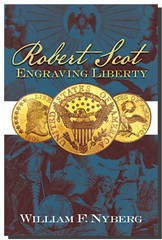 As I am sure you read in my biography of Robert Scot, I am in agreement with the research of Patterson and Dougall in The Eagle and the
Shield. My book provided additional Robert Scot engravings to strengthen Patterson and Dougall's attribution of Scot as the engraver of the
original Great Seal die, including the hexagram star patterns of the 1798 Six Mills Per Dollar stamp and the 1800 Commissioner of Revenue
counterstamp, both of which are exactly the same star pattern as on the original Great Seal.
As I am sure you read in my biography of Robert Scot, I am in agreement with the research of Patterson and Dougall in The Eagle and the
Shield. My book provided additional Robert Scot engravings to strengthen Patterson and Dougall's attribution of Scot as the engraver of the
original Great Seal die, including the hexagram star patterns of the 1798 Six Mills Per Dollar stamp and the 1800 Commissioner of Revenue
counterstamp, both of which are exactly the same star pattern as on the original Great Seal.
There is absolutely no archival evidence that Haym Salomon was involved with the Great Seal design, or that the star constellation on the Great Seal represents the Star of David. The Great Seal star constellation is described in Continental Congress records as "The Constellation denotes a new State taking its place & rank among other Sovereign powers."
To read the complete article, see:
Ben Carson Thinks There’s a Star of
David on the Dollar Bill. There’s Not. (http://abcnews.go.com/Politics/ben-carson-thinks-star-david-dollar-bill/story?id=35562091)
To read the earlier E-Sylum articles, see:
WHO WAS HAYIM SOLOMON? (www.coinbooks.org/esylum_v15n19a19.html)
MORE ON HAYM SOLOMON (www.coinbooks.org/esylum_v15n20a15.html)
THE SAMUEL H. AND HENRY CHAPMAN CLIENT LIST
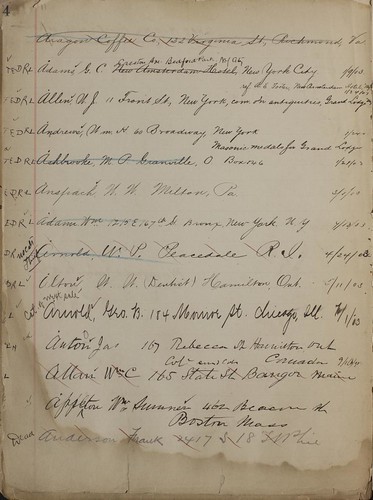 Among the rarest and least frequently encountered documents in numismatic literature are dealer client lists. The Newman Numismatic Portal
is pleased to announce the availability of the Chapman brothers client list, now available on Internet Archive. We are grateful to Dan Hamelberg for
making this important resource universally available to researchers and collectors.
Among the rarest and least frequently encountered documents in numismatic literature are dealer client lists. The Newman Numismatic Portal
is pleased to announce the availability of the Chapman brothers client list, now available on Internet Archive. We are grateful to Dan Hamelberg for
making this important resource universally available to researchers and collectors.
The Chapmans were Philadelphia dealers, who, together and separately, conducted auctions from 1879 to 1932. The pair introduced a new standard for auction catalog production and are especially noted for their high quality photographic plates. As a result the Chapman series is heavily pursued by literature collectors today. Several weeks ago we announced the availability of a large number of Chapman bid books, loaned to us by Dan Hamelberg, and this client list further enables researchers by explicitly identifying these bidders and supplying addresses for them.
This particular list was assembled c. 1904-1906, with several addenda following the alphabetical listing, including a “list of frauds,” “foreign dealers,” and an enumeration of “persons wanting priced catalogues of all sales.” The client list includes many names that are no surprise – Clapp, Earle, Deats, Gies, Granberg, and so on, many of whom ended up being consignors to Chapman sales. The entire list comprises several hundred names and addresses.
A sales list key at the beginning of book can be used to determine which catalogs were sent to each client. In addition, two mail pieces, “Circular announcing dissolution of Partnership, August 1, 1906” and “Announcement of Henry Chapman, Jr., Sept. 4, 1906” are noted, and these were widely distributed to the client base. The presence of the “Announcement” suggests that this particular volume remained with Henry Chapman following the split of the two brothers in 1906.
In conjunction with other resources, there are a few tidbits here. In 1904, the wife of collector William Boerum Wetmore wrote to the Chapmans that Wetmore would no longer be collecting as “his means will not permit such an outlay” (this, from the Chapman/Wetmore correspondence file at the ANS – see the Asylum article “The ANS Chapman Files: Major William Boerum Wetmore,”
In the client list, the Chapmans have added the note “no cats.” next to the entry on Wetmore. Clearing up another mystery, this ledger also resolves the identity of Frank H. Stewart, who appears in the Chapman bid books – was this the same Frank H. Stewart who worked in Philadelphia and owned the first United States Mint property? Remarkably, no. The Chapmans list only Frank H. Stewart of Grand Rapids, MI, a warning that matching less common names does not always confirm identity.
To view the Chapman mailing list, see:
Samuel Hudson and Henry Chapman Mail List
(https://archive.org/details/chapman_mail_list_images)
To read the Earlier E-Sylum article, see:
CHAPMAN BID BOOKS DIGITIZED BY NEWMAN PORTAL
(www.coinbooks.org/esylum_v18n43a02.html)
To read the Wetmore article, see:
The Asylum: Quarterly Journal of the Numismatic Bibliomania Society Volume
24n2 (https://archive.org/details/asylumquarterlyj24n2numi)
THE BOOK BAZARRE
RESEARCHERS WELCOME THE NUMISMATIST DIGITAL ARCHIVE
Digital-content specialist Exact Editions of London, England, is providing the platform that gives more than 24,000 American Numismatic Association members access to the archive.
“Exact Editions is delighted to partner with Walsworth to build this deep, compelling and completely searchable digital archive. We look forward to building additional cross platform archives with Walsworth, and are excited about working with the ANA to bring this valuable resource to its members,” said Daryl Rayner, managing director of Exact Editions.
Walsworth worked closely with ANA to aggregate all of the print issues from the ANA library and private collectors, managed the entire digitization process, and worked with Exact Editions and ANA to create a customer experience that allows ANA members to access this benefit. In addition, Walsworth and Exact Editions will continue to provide user experience enhancements and member support to ANA.
To read the complete press release, see:
Walsworth and the American Numismatic Association Partner to Deliver Digital Library Containing 127 Years of The Numismatist
(www.ourmidland.com/prweb/walsworth-and-the-american-numismatic-association-partner-to-deliver-digital/article_bd882e35-8a7f-5b6c-89c3-9039fe63060a.html)
The main screen looks as below with older listings set up in decades and the current decade by year. The individual editions for that year appear as shown below and are clickable to select. If you select a decade, that decade is expanded so that each year appears separately.

I selected 1880s and the 6 Numismatists for 1888 and 1889 appear. If you select just 1888 from the top, you still get all 6 editions (oops!!), but if you select 1889 you only get those 4 editions. As this is a small edition, it shows all of the pages on the screen. If you pick a larger edition like below, you get several pages.
Clicking on any page opens and enlarges it, I had to click a second time for full screen so that I could actually read it on my laptop.
You have to use the arrow buttons to scroll from page to page. Using the windows scroll bar only lets you to scroll through the page.
The zoom in and out buttons are not variable (allowing for a % to zoom in or out by) I tried the “printable pdf” button as it would be nice to save/open the whole edition in pdf format. Unfortunately, it creates only the active page as a .pdf instead of the whole document.
You also need the arrow buttons for larger editions to scroll to the next set of pages
Finally, as editor of the uspatterns.com website, I entered “Pattern” into the search window to find all of the editions in which that word appears. The listing defaulted to best match which gave a rather random listing of the editions. It would be better if all of the defaults were by “Newest”. My preferences showed Newest as the default but that does not appear to be in effect for the search button.
I clicked on newest and the listing did sort properly. It lists 8 editions per page, with the next and prev buttons. There are bugs here as my search notes that it returned more than 200 rows but the page scrolling ended at page 25 ie 200 records which got me to about 1938. If I went back to the top and changed the sort from Newest to Oldest, I got the first listing all the way back in 1897 !! What they need are more buttons allowing one to go back to the very start or go to the very end of the search
In any event, if you select one, it brings you directly to that page. From there you can scroll forward or backward within the edition.
Overall, I would say it is a good start, but it still needs some work to make it more user friendly.
To call the ANA's project to make available digital copies of every issue of The Numismatist a boon to scholars and collectors alike is an understatement. Coming as I do from the perspective of one who has only comparatively recently joined the ANA, access to older issues has presented some difficulties, especially when researching some of the more arcane corners of our hobby. For writers, this resource is particularly helpful to see what others have written on a particular topic and find avenues that are not as well traveled so as to provide a deeper understanding of your area of interest. For collectors of all levels of experience, the ability to quickly put your hands on articles on all aspects of numismatics will help you gain an appreciation for pieces in your collection.
Once you create your account and login - make sure you have your ANA Member Number handy - the site is easy to navigate. The home page shows the covers of the most recent issues and you can leaf through back to older issues easily. Quick links up at the top will permit you to access the five most recent years, but after that it is broken down by decade all the way back to the 1880s. The Search functionality is quite simple and robust, though using keywords to quickly locate relevant articles was helpful.
For instance, searching on "jolas" got me not only the recent detailed study of Texas jolas work by James Bevill & Alvin Stern in the May 2011 issue but also a smaller article authenticating recent finds of the coins, as well as an April 1972 study on the discovery of the pieces. More generic searches such as on Humbert slugs or double eagles will generate hundreds of results, you can sort the results by best match, newest, or oldest appearance of that search term. Helpfully, there is functionality to allow you to print or save a PDF version of the page you are viewing. In addition, at the very bottom there is OCR (optical character recognition) text of the page. As is typical with OCR, often the text is somewhat garbled, though perhaps if the ANA is so inclined, perhaps a crowdsourced volunteer effort to correct and clean up any misreadings could be a future project.
All in all, the clean uncluttered interface gives this IT professional welcome relief from the rampant packing in as many bells and whistles as possible - sometimes a minimalist approach to web design is preferred. I have not tried using the archive on a mobile device or a tablet yet so I cannot comment on usability there, but I would think for tablet user or "phablet" users this will be an incredible resource to have on the go. Probably one of the most important online resources available to the numismatic community and one that should be readily utilized.
Let me start by saying that having The Numismatist available online is a real treasure for anyone interested in doing numismatic research. Instead of spending a fortune in money and time to acquire, read and index the issues, I now have them available for no cost above my ANA membership. I’m a fairly recent member of the ANA (since 2004), so I don’t have a collection of back issues of The Numismatist, nor do I want to spend the time to read through all the back issues to find a few nuggets of interest.
Last night I finally had the chance to peruse the digitized issues of The Numismatist. I found the log-in process to be a breeze and was impressed by the quality of the digitized pages.
First off, I looked for a copy of the April 1951 issue. The issue contains an article by Walter Breen on the New Orleans Mint and in the “old days” (that is, last year) when I wanted a copy of the article, I sent an email request to the ANA Library, whose staff photocopied the article and mailed it to me, along with a fairly nominal bill (for $5 or so, if I remember correctly).
Now, however, navigating to the issue is simply a matter of clicking on the “1950s” button, followed by the “1951” button. Once the issues for that year appear, one can just click on the cover of the April issue and find the pages one wants. Once there, a simple click of the “printable pdf” button on the top right-hand corner yields a high-quality pdf image.
So much for sending an email, waiting for the mail to arrive and paying a modest bill!
The one advantage to waiting for a few days to start using the digitized issues is that I could rely on the collective wisdom of the PCGS and NGC discussion boards. A thread on each is devoted to the archives of The Numismatist (including search tips) and user CaptHenway posted a link to the Exact Editions’ search guide: http://blog.exacteditions.com/2015/03/12/use-our-search-technology-to-get-the-most-out-of-your-subscription/
The “search” feature is the “weakest link” of the website: a user has only a basic search box. There’s no way to search by Author or range of publication dates, nor is there a way to search the articles only or the advertisements only. Search results are displayed by “best match”, “newest” or “oldest.” The “best match” feature seems to show every match, even if there are three matches on a page, while using “oldest” seems to show only the issues in which a match exists. Another quirk I noticed: searching for “Breen” didn’t find the April 1951 issue, while searching for “Breen” AND “New Orleans” did find the April 1951 issue.
Of course, having only a basic search function available is also a gift to a researcher: in only a few searches, I found articles that I never knew existed and would never have found in a well-targeted search. (Unfortunately, this “gift” is similar to visiting Faerie, where time passes differently than it does in the human world and one must be careful not to be mesmerized “for a few minutes” by all the shiny objects only to find that ten years have passed by in the outside world!)
For example, with a better-targeted search, I would have never known that Cole Danehower wrote an article for the February 1991 issue that told the story of the political struggle to establish the San Francisco Mint. (I will now resist the temptation to discuss the results of my Google search of Mr. Danehower – other than to note that he became a subscriber of The E-Sylum in September 2012 and that he passed away in August 2015.)
In conclusion, let me say that this gift from the ANA is (and is not) what it seems: it is a wonderful tool for a researcher that brings the last 100+ years of numismatic history to your fingertips – and that is its danger. I foresee hundreds of “lost” hours in my future!
Now, for the next “gift” to the numismatic community: who will digitize the issues of The Numismatic Scrapbook Magazine?
I logged in to the ANA website on the morning of December 1, 2015, to check out the digital archives for The Numismatist. It was not available then but I received an email later in the day confirming that it was now available.
The archives are not on the ANA site. Users are directed to a site hosted at www.exacteditions.com. They have a simple procedure to log-in that requires an ANA member number, an email address and a password. This was quite easy and instructions are on the ANA site.
The user enters a search term and results are shown. On the left is a thumbnail image of the cover of that issue of the journal. To the right of that is a thumbnail image of the exact page. On the right is a preview pane showing the search term and nearby text. A user can ask for results from newest to oldest or oldest to newest.
If you know the issue date and page for an article, it is also possible to search for just that issue and the desired page. There is a magnification tool to enlarge the image.
My results indicate that the site can search through various fonts and size of text to match the desired search terms.
The ANA digital archive of The Numismatist is wonderful! I have probably spent more than ten hours this week doing research on the site. I have found many gems of information not previously discovered or easily forgotten. I hope I do not give the wrong impression when I mention a few things that I wish were better.
The search will produce no more than 200 results. There is no way to know how many more results are not listed or how to access them. I can narrow the results by including additional terms but I don’t know how to broaden the search to all occurrences.
I know that I can include a phrase within quotation marks. There are Boolean search tools that allow for a search of two phrases within the range of a few words. These tools are not mentioned in the instructions.
I wish there was a way to search with a date range. This would reduce the number of results that don’t interest me.
Sometimes the preview pane is blank or contains fragmentary images that do not include the search term. I also found searches where the search term cannot be found on the page shown.
With one of my searches, I was looking for exhibits that included a 1792 half disme. I found several references to the piece donated by Steve Contursi and exhibited at the ANA convention in 2012. I could not find any reference to the MS-68 piece loaned to the ANA and exhibited in 2013. I don’t know if that item was never mentioned in The Numismatist or if the search failed to turn up a proper match.
I discovered an error in the way some pages were scanned out-of-sequence. I do not see any instructions on how to report problems to the site host.
As I am searching, I am also keeping notes in another document. If I switch back from that document to the search results, I lose the original image. That is annoying.
Now I face a dilemma. I have a string of 75 years of issues in my library. I can’t see a reason why I would ever want to move several heavy boxes to find an issue for research. The digital archive is much more convenient. I can’t bear to throw them out. I can’t see why anyone would want my back issues. What do we do with paper when it represents obsolete technology?
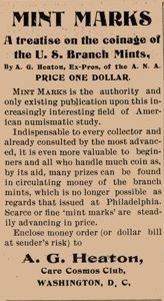 My own take on the digital archive is similar to those described above. While there are some issues to resolve and enhancements that could
be made, overall the system is a valuable research tool. Among my first queries was a vanity search on my own name, and it turned up 101 references.
Only one of these was a false positive, and it was around #99 on the list. Most of these references I'd forgotten about, but the search was
spot-on. It found all the articles I've written and (as far as I can tell) it found all other mentions of my name. A few searches for older terms
like "George Rode" correctly located articles containing those terms in issues all across the publication's 127-year history. I also
used the archive to successfully identify people shown in a 1964 ANA convention photo (see the article elsewhere in this issue). Easy as pie!
My own take on the digital archive is similar to those described above. While there are some issues to resolve and enhancements that could
be made, overall the system is a valuable research tool. Among my first queries was a vanity search on my own name, and it turned up 101 references.
Only one of these was a false positive, and it was around #99 on the list. Most of these references I'd forgotten about, but the search was
spot-on. It found all the articles I've written and (as far as I can tell) it found all other mentions of my name. A few searches for older terms
like "George Rode" correctly located articles containing those terms in issues all across the publication's 127-year history. I also
used the archive to successfully identify people shown in a 1964 ANA convention photo (see the article elsewhere in this issue). Easy as pie!
Illustrated are a couple interesting items I found right off the bat. Both are from the November 1899 issue. Above and to the right is an ad for Augustus Heaton's landmark work on Mintmarked U.S. coins. Below is prescient space filler encouraging readers to "Begin the Century Right!"
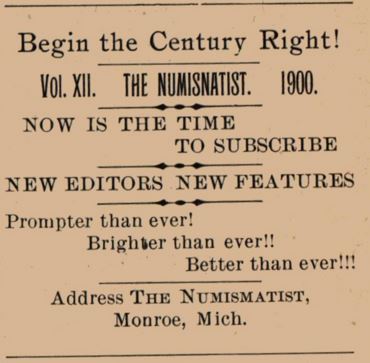
Many thanks to the ANA for making this archive available. Again, everyone: Welcome to the Future! -Editor
To access the Numismatist archive (Members Only), see:
THE NUMISMATIST DIGITAL ARCHIVES
(https://www.money.org/thenumismatist/digitalarchives)
Mobile version available
In addition, the Exact Edition app is available for smartphones and tablets, putting all 110,000 pages in the space of one page or
less.
Once inside the ExactEdition format, users will see the publication accessible decade-by-decade, with further access available to individual years within each decade.
Each year will launch a fresh screen showing the respective issues for that year, identified by the publication date.
Tools allow viewers to enlarge each page, clip content and even save individual pages as PDFs. A search bar allows text searches within the issue, and a search of all issues is available on the main page as well. A search for “Starck” revealed four results across a 43-year-period, in about one second.
Results are displayed with three elements: the cover image at left, the page image in the middle and an enlarged focus on the search term at right.
Access of the digital archive is a free benefit of membership in the ANA.
To read the complete Coin World article, see:
American Numismatic
Association launches digital archive of The Numismatist magazine
(www.coinworld.com/news/us-coins/2015/12/ANA-launches-digital-archive-of-The-Numismatist-magazine.html#)

COINVAC DIGITIZES ITS 100TH INTERNET AUCTION SALE
Ancient coin website Coinvac.com is happy to celebrate the entry of its 100th pre-Internet auction sale. Totaling over 35,000 individual lots, the effort was accomplished over several months of painstaking scanning and parsing of old auction catalogues. These were then reconstructed joining each lot's text description to their corresponding plate images, tagged according to period, weight, etc. then finally uploaded one at a time.
Among the dozens of auctions now archived are found some of the most legendary sales ever held including the Samuel Pozzi collection dispersed in 1921 by Naville Ars Classica, Montagu by Sotheby's in 1897, the Walter Niggeler collection by Bank Leu in the mid-sixties, Imhoof-Blumer by Adolph Hess and Jacob Hirsch in the early 1900s and the best of the run of printed auctions carried by the notoriously doomed firm Numismatic Fine Arts. The full list is published at http://coinvac.com/AuctionsList.html
Coinvac's 1.7 million records are extensively categorized providing easy access to large data sets at the click of a button across many different groupings. Together with an array of sophisticated tools and a user-friendly interface the sum effect greatly lessens the need for researchers to rely on keyword searches alone or having to sift aimlessly through countless records as is often the case.
The online community is fortunate to enjoy strong growth in the quality and quantity of sites devoted to ancient numismatics and in particular to the ever-widening list of projects involved in digital archiving. By directing increased resources into making readily accessible the absolutely massive amount of coin sales data from the late 1800's through the whole of the 20th century, Coinvac opens a needed front in a time where virtual repositories house increasingly overlapping information gleaned from the same data streams. It is the expectation that if the current pace of growth can be maintained the site will be able to claim within a few months a fully comprehensive record of the trove of sales of all major auctioneers from the dawn of the illustrated catalogues in the 1880's through to the present day.
Interested parties are encouraged to contact site owner Rasiel Suarez at rasiel@coinvac.com
To visit the CoinVac website, see:
www.coinvac.com
ZYRUS PRESS EXITS NEW BOOK PUBLISHING BUSINESS
Bart Crane writes:
While publishing is what I love to do, unfortunately, at this time, I have no plans to continue publishing new books.
The Zyrus Press imprint is now under the umbrella of Transline Supply Company. It just did not make sense to carry it on as a separate business entity.
We will continue to reprint existing titles under the Zyrus name, as well as the Cornerstone Album line.
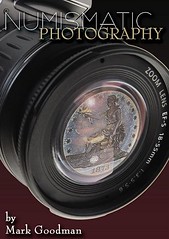
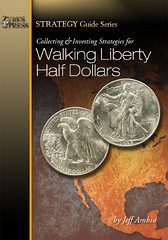
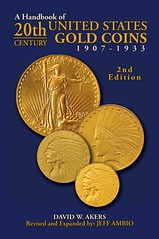

To visit the Transline web site, see:
www.translinesupply.com
THE BOOK BAZARRE
BOOK REVIEW: THE COINAGE OF THE IRANIAN HUNS
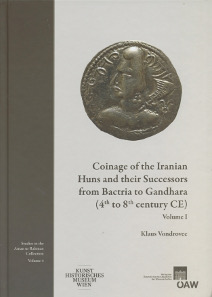 Klaus Vondrovec, Coinage of the
Iranian Huns and their Successors from Bactria to Gandhara (4th to 8th century CE). Studies in the Aman ur Rahman Collection Volume 4.
Vienna, Austrian Academy of Sciences, 2014. 2 vols., 960 pages, color illustrations throughout. Hardcover. 21.5 x 30.2 cm.
978-3-7001-7695-4. 179 euros.
Klaus Vondrovec, Coinage of the
Iranian Huns and their Successors from Bactria to Gandhara (4th to 8th century CE). Studies in the Aman ur Rahman Collection Volume 4.
Vienna, Austrian Academy of Sciences, 2014. 2 vols., 960 pages, color illustrations throughout. Hardcover. 21.5 x 30.2 cm.
978-3-7001-7695-4. 179 euros.
When, in 1967, Robert Göbl published his “Dokumente zur Geschichte der iranischen Hunnen in Baktrien und Indien” (“Documents on the history of the Iranian huns in Bactria and India”), he not only introduced the term ‘Iranian huns’ to the academic world, but also focused on an area and a historic period which researcher had hitherto treated like an orphan. His research was based on numismatics, which takes account of the fact that the past of those peoples that once settled in Afghanistan and neighboring India, in parts of Iran, Turkmenistan and Pakistan, could only be reconstructed by accessing numismatic material because only a few other sources have come down to us.
With all those shocking news we keep hearing since October 2011, the average Western European at least roughly knows how to pinpoint Afghanistan on the map. But he hardly knows anything about the history of the one so rich region, particularly when this history refers to events that occurred prior to the Russian occupation. The comparatively low scholarly interest, at least until the turn of the centuries, may also have contributed to this. Then, in 2001, an international research project was established which focused on the history of the Western Himalayas. Pursuing an interdisciplinary approach, it promoted archaeology, history, history of art, epigraphy, and linguistics. Of course, numismatics added to this. Consequently, Klaus Vondrovec went along these lines when he revised the old subject matter of Robert Göbl, as part of CHWH (= Cultural History of the Western Himalaya) on a material basis which no longer – as in 1967 – comprised 1,200 coins but nearly 6,500 specimens, stemming from coin finds made in Afghanistan and from auction sale catalogs of Western coin houses.
Above all, the special collection of Aman ur Rahman constituted the material basis for Klaus Vondrovec. Or, to be more specific, one of the many special collections of Aman ur Rahman of which some have already inspired research in the past. To ensure that his catalog achieves universality, as intended, the author has integrated further material from a number of renowned coin collections, such as Berlin, London, New York, Oxford, Paris, and Vienna, as well as a few special collections, such as Bern, and a range of private collections, like the Righetto Collection, for example.
The material is cataloged in 10 individual chapters.
1.) Kidarites
2.) Dinars: Kidarite and Alkhan Periods
3.) Alkhan
4.) Tobazini
5.) Hephthalites
6.) Sasanian Coinage and Imitations
7.) Nezak
8.) Alkhan-Nezak Crossover
9.) Western Turk Period
10.) Gandharan Copper
Every chapter begins with a detailed comment. Broadly speaking, the coin imagery is carefully analyzed first, followed by a historical overview which helps to put the coins in the overall context. The catalog proper comes next, which, paying homage to Robert Göbl as the ‘founding father’ of this discipline, adopts the Göbl numbering. This, however, impairs the work’s clarity. Certainly, many catalog authors would have wished for a bold new start with new numbers (as well as an index contrasting the established Göbl types with the new Vondrovec numbers).
At any rate, the catalog is lavishly illustrated, with special care devoted to the photographs. It is sometimes hard, particularly with the bronze coins, to recognize every detail of coin by a look at the photographs alone. Where necessary, the author thus provides clarifying drawings, which are all highly welcome! To be frank, the reader would appreciate if more of these drawings were given. By a look at the “Typological overview” (thanks to the author for this wonderful tool!) it becomes apparent how important these drawings actually are. Although Klaus Vondrovec chose the best possible image available of the best preserved specimen of every single series, any non-initiated reader will spend some time on searching.
To read the complete article, see:
The coinage of the Iranian huns and their successors
(www.coinsweekly.com/en/News/4?&id=3791)
BOOK REVIEW: OLYMPIC MEDALS AND COINS
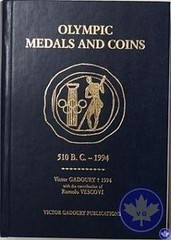 OLYMPIC MEDALS AND COINS. 510 B.C. - 1994 by Victor GADOURY & Romolo VESCOVI (Victor Gadoury Publications. Monaco. 1996)
OLYMPIC MEDALS AND COINS. 510 B.C. - 1994 by Victor GADOURY & Romolo VESCOVI (Victor Gadoury Publications. Monaco. 1996)
Last week’s article on “RARE OLYMPIC MEDALS AT AUCTION” encouraged me to send the present article about this important reference book on Olympic Medals and Coins. Howard DANIEL also did an article in The E-Sylum in 2009!!! I encourage you to read his article and homage to the author Victory GADOURY.
A year ago I was surprised to discover that an Oscar ROTY plaque medal dated 1900 was not struck for the 1900 Paris Universal Exhibition as inscribed but for the Paris Olympic games! So I acquired this book about two months ago to identify Olympic medals.
 A quick check in my copy confirms that the plaque Gold Medal format and designs mentioned in last week’s article is identical to that given
to winners of the 1900 games. The following metals: gilt silver, silver, silvered bronze and bronze were offered to the other participants. It also
states that these second Modern Olympic Games were dedicated to Pierre DE COUBERTIN, the French Restorer of the Games and that the great star of
these games was the American, Alvin KRAENZLEIN who won three gold medals. The books covers Olympic coins and medals known to the authors from the
Greek coins minted in Olympia in 510 B.C to the 1996 Centenary of the first modern Olympics.
A quick check in my copy confirms that the plaque Gold Medal format and designs mentioned in last week’s article is identical to that given
to winners of the 1900 games. The following metals: gilt silver, silver, silvered bronze and bronze were offered to the other participants. It also
states that these second Modern Olympic Games were dedicated to Pierre DE COUBERTIN, the French Restorer of the Games and that the great star of
these games was the American, Alvin KRAENZLEIN who won three gold medals. The books covers Olympic coins and medals known to the authors from the
Greek coins minted in Olympia in 510 B.C to the 1996 Centenary of the first modern Olympics.
This reference book, OLYMPIC MEDALS AND COINS is available from the Editions V. Gadoury in Monaco for 29 Euros. It also exists in a French version.
To read the complete article, see:
Olympic Medals and Coins 1996
(www.gadoury.com/en/books/olympic-medals-and-coins-1996)
To read the earlier E-Sylum articles, see:
BOOK REVIEW: OLYMPIC MEDALS AND COINS BY VICTOR GADOURY
(www.coinbooks.org/esylum_v12n32a06.html)
RARE OLYMPIC MEDALS AT AUCTION (www.coinbooks.org/esylum_v18n48a36.html)

UPDATE ON DAVID LANGE'S RESEARCH PROJECTS
Coin Collecting Boards
The best new board to surface is a Lincoln Printing board for Buffalo Nickels that has the title misspelled as NICKLES. I took this
recently in trade, only to find out that reader Chris Buck also had an example and had not yet reported it to me. It has been cataloged as
L5¢BC.2, while the variety previously listed with that number is now L5¢Bc.3, as it clearly followed the misspelled variety.
Two new Oberwise varieties surfaced over the past few months: O5¢Bq and O25¢Ac. The latter is particularly significant, as it features the deeply marbled face printing so prized by collectors. It also has a correct date span pasted over incorrect dates. Rather than damage the board by removing these additions, it may be presumed that the underlying dates are those intended for the concluding board for the Barber Quarter series. The seller’s photos for two of these new boards are included with this newsletter.
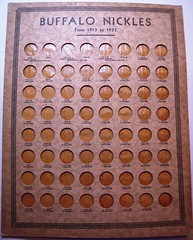
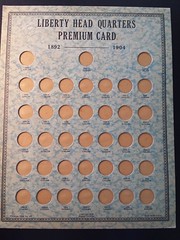
The annual updates to both my coin board and coin album books are also included with this newsletter. There are relatively few changes to the former, but there has been some upward price movement.
Library of Coins and Treasury of Coins Albums
My next book covers the Library of Coins and Treasury of Coins album lines and is now in the layout process. I expect it to be in print by
the spring. My website is still down, awaiting the time to put together an entirely new version. As soon as the new book is off to the
printer I can begin working on this.
For more information, contact Dave at: langedw@msn.com
EXHIBIT TO HIGHLIGHT MEDALS OF CHRISTIAN GOBRECHT
Franklin Institute Medal
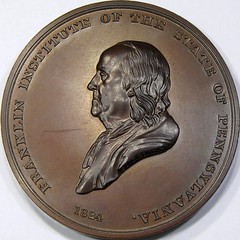
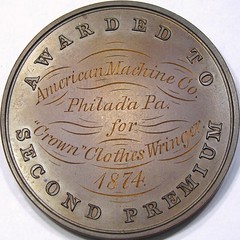
Franklin Institute Medal, 50mm. Gobrecht engraved this obverse design in 1825 and was paid $100 by the Franklin Institute upon completion. The 1824 date on the obverse is the founding date for the Institute. The dies were provided to the U.S. Mint which struck the medals. This piece is a bronzed-copper exam-ple with a “Second Premium” reverse (not of Gobrecht design) issued in 1874 to the American Machine Company, for their Crown Clothes Wringer. Interesting to note that this example also appears to be overstruck on a reverse of the Franklin Institute Reward of Skill and Ingenuity medal.
New England Society for Promotion of Man-ufactures and Mechanic Arts Medal

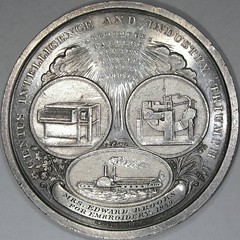
New England Society for Promotion of Manufactures and Mechanic Arts Medal, 63mm. Gobrecht’s largest medal and often considered his most impressive and beautiful design. Sometimes called the “Archimedes Medal” due the obverse. The 1826 date on the ob-verse is the bounding date of the Society. Gobrecht himself was awarded the first of these medals for his skill and excellence in the creation of the dies. This medal was also struck by the U.S. Mint and is the only one of Gobrecht’s medals that is punched with C.GOBRECHT.F on both obverse and reverse. It is considered a scarce and important U.S. Mint medal. This piece is a silver example issued in 1839 to Mrs. Edward Brooks, for her embroidery.
Massachusetts Charitable Mechanic Association Medal
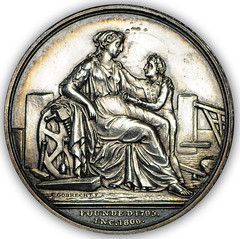
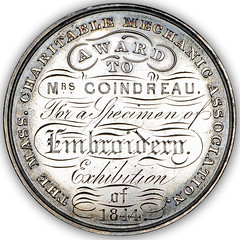
Massachusetts Charitable Mechanic Association Medal, 39mm. Perhaps the longest used of Gobrecht’s medal designed, issued by MCMA from 1837 until at least 1892, all were struck by the U.S. Mint. It is an interesting ‘seated’ design from the Gobrecht Dollar period, with a similar diameter and C.GOBRECHT.F punched on the obverse design. This piece is a silver example awarded in 1844 to Mrs. Coindreau, for her specimen of embroidery.
For more information on the Liberty Seated Collectors Club, see:
www.lsccweb.org

ERIC NEWMAN INTERVIEWED BY LOCAL TV STATION
John Burroughs made it to the state championship game in Class 3 Football.
They had a quite a fan in the stands. Eric Newman was there when the school opened. And at 104 years old he is still there.
Newman is an amazing man with great grandchildren on the John Burroughs roster.
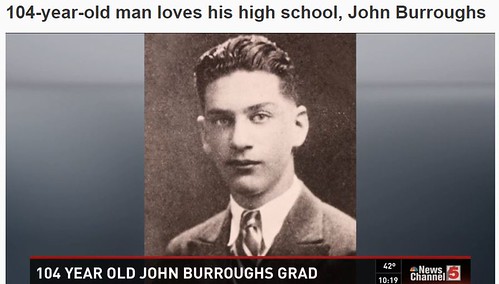

To view the complete video, see:
104-year-old man loves his high
school, John Burroughs (www.ksdk.com/story/sports/high-school/football/2015/11/27/104-fan-john-burroughs/76483016/)
NOTES FROM E-SYLUM READERS: DECEMBER 6, 2015
Correction: Marcus Aurelius, Not Mark Antony
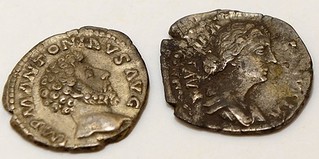
Allan Davisson writes:
I doubt that I am the first to point out that the so-called “Mark Antony” coins are actually denarii of Marcus Aurelius and worth a modest amount in the condition shown.
To read the earlier E-Sylum article, see:
ROMAN COIN HOARD FOUND IN A WELSH FIELD
(www.coinbooks.org/esylum_v18n48a26.html)
Notes from Dave Hirt
Dave Hirt writes:
Week after week you keep posting the most interesting numismatic items. I would like to comment on some of them from last week's post.
Dollar Sign
About the dollar sign, I have a question. As a young boy I learned to make it with two vertical strokes. Now it is only made with one.
When did this change?
A.C. Gies
Connected to the post on the Western Pennsylvnia Numismatic Society, I am happy to say that I recently acquired a hard bound copy of the
half dollar collection of A. C. Gies, one of the WPNS members, sold by Stacks in 1940. Over the years I had bid on this sale several
times, but was never successful until now.
J. F. Bell
On the Col. Green 1845 proof set, and the three gold proof coins sold to J. F. Bell. His real name was Jacob Shapiro. Over the years he
assembled, and then sold several collections of gold coins. The 1845 proof coins were sold in a set consigned to Numismatic Gallery sale
of 3/1/ &3/2/1948. The proof coins were sold individually as part of date sets. Bell took quite a loss on these coins, as the coins he
paid $1100. for only realized a total $545. Interestingly, I believe that this was the first really major numismatic sale held on the
west coast.
To read the earlier E-Sylum articles, see:
ARTICLE CREDITS OLIVER POLLOCK WITH CREATING DOLLAR SIGN
(www.coinbooks.org/esylum_v18n48a15.html)
EARLY HISTORY OF THE WESTERN PA NUMISMATIC SOCIETY
(www.coinbooks.org/esylum_v18n48a17.html)
THE COL. GREEN 1845 PROOF SET (www.coinbooks.org/esylum_v18n48a21.html)
The Sketchy Past of the $2 Bill
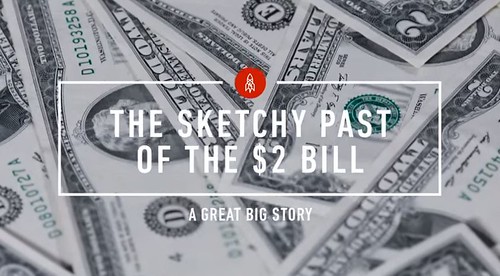
The two-dollar bill has a shady past. The bills, affectionately called "Toms" (nicknamed for Thomas Jefferson's image) were once associated with gambling, bribes and prostitution. While rare, they are still passed around today, and kept in the wallets of uncles everywhere.
To view the complete video, see:
THE SKETCHY PAST OF THE TWO-DOLLAR BILL
(www.greatbigstory.com/stories/nefarious-past-of-2-bill)
Taxay and the Social Security Death Index
Paul Schultz writes:
Regarding Don Taxay, I know nothing about him personally, but there is something called the Social Security Death Index. The SSDI was created because so many people tried to steal the identities of the deceased, so the Social Security Administration actually publishes the name and social security number of everyone who dies in order to prevent their being given loans, credit cards, etc. Death records go back to at least the early 1960s, possibly earlier. It is used frequently by genealogists too.
I searched for a Don or Donald Taxay (an unusual name), and none was found. Anyone who worked in almost any job in the US after 1935 has a social security number, so therefore Don Taxay is either still alive or died overseas in such a way that his death was never reported to the Social Security Administration (perhaps as an overseas permanent resident who never collected social security).
To read the earlier E-Sylum article, see:
BREEN AND THE INSTITUTE OF NUMISMATIC AUTHENTICATORS
(www.coinbooks.org/esylum_v18n48a19.html)

SLOSS PHOTO IDENTIFICATIONS SOUGHT

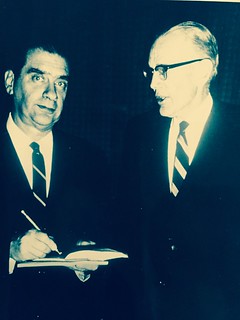
Left: Ray Byrne, Dr. James O. Sloss, John L. Knabenschuh, Jack F. Burns
Right: Eric P. Newman, William W. Woodside?
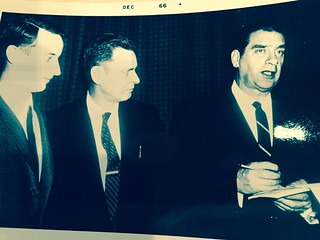
Bill Hunter, Charles N. Erb?, Eric P. Newman
The first photo has a notation that it was taken at the 1964 ANA convention in Cleveland. Everyone's wearing a convention badge and posing for some award. Zooming in, I think I can read the words "Fifty Years". Larry Dziubek recognized John Knabenschuh, who was a WPNS member and Past President. Neither of us recognized the fourth man. However, finding the answer was a lot easier using the new Numismatist online archive. Here's what I found in the November 1964 issue (p1489):
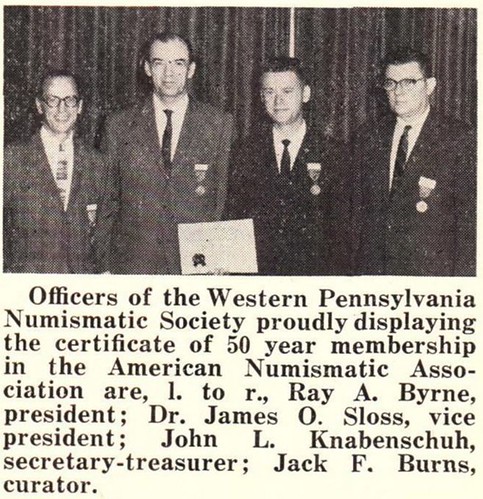
The second photo was taken at the same event as the third photo, where we can see that it is marked DEC 66, meaning the film was developed in December 1966, so it could have been taken that month or earlier. That’s late for an ANA convention photo. WPNS member Bill Hunter is in the third photo, so my guess is that this was taken at a WPNS Banquet where Eric Newman was the speaker. Larry believes the second gentleman may be WPNS member Chuck Erb - I knew Chuck as well, but neither of us are sure.
Any help confirming the tentative attributions would be appreciated. Thanks.
ROBERT WOOD MERCER (1840-1894)
Robert Wood Mercer (1840-1894), was born in Ohio on April 12, 1840 the son of Joseph Mercer (1806-1862) a native of Ohio and Anna Day Mercer (1813-1855) from Virginia. Mercer was married to Rosetta Waddell (1843-) on December 31, 1867, at Gallia, Ohio, and they had two sons Robert Waldo Mercer, (1871-), and Cleaney W. Mercer (1874-1907). It seems reasonable to assume that his last son was named after the well-known Cincinnati numismatist and collector Thomas Cleaney.
We shall see that Mercer was a self-made man and, as some, went the way of a self-destructive man as well.
During the Civil War he enlisted in Company B, Ohio 18th Infantry Regiment on 4 September 1861. He mustered out with the rank of Private on 9 November 1864.
After the Civil War he became a merchandizer specializing in stencils. Over time he added other items and eventually included items typical of the classical curiosity cabinet. On December 27, 1866 he advertised as R. W. Mercer & Co., 56 ½ Jefferson Street between Second and Third, in the Louisville Daily Courier for agents “in every city and town in the South to sell name plates, stencil brands, and alphabets, badges, baggage and key checks, etc.” Evidently he either moved back to his home state in Ohio or else the address in the ad was that of an agent living there since we find that on May 19, 1868, he advertised in the Cincinnati Gazette “Agents Wanted” R. W./ Mercer “Brand cutter” 162 Main Street. On January 20, 1869 he advertised in the Cincinnati Daily Enquirer selling stencil brands at 5 cents per letter with an address at 162 Main Street, Cincinnati. Over a decade late he will call his store “the Stencil Stock House”.
By the mid to late 1870's he became a coin dealer and owner of The Curio Store, 147 Central Avenue, Cincinnati, Ohio; and also at 148 Main Street, Cincinnati, Ohio, later on he moved next door to 147 Main Street.
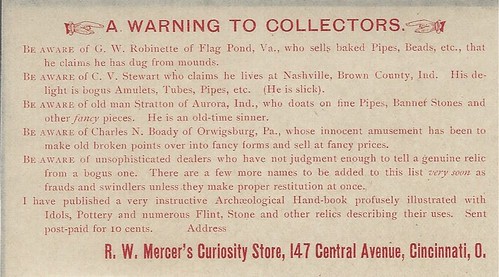
In September 1877 he was elected a member of the Ohio Archaeological Society. Though an amateur archaeologist at best he fancied himself a real archaeologist though he had no formal training or experience whatsoever. He was, however, considered by many including experts to be an authority on Indian relics and artifacts. Unfortunately his notoriety as an expert and dealer in Indian relics caused him to create a black list and controversy among the other dealers. This is the least of his crimes.

In the July 1879 issue of Numisma we find the notice of the coin sale of 590 lots of R. W. Mercer catalogued by himself held at Cincinnati on May 23d.
In the January 1881 issue of Numisma we find the report that his collection was catalogued by W. E. Woodward of 1704 lots and sold by Bangs & Co., New York on December 8, 9 & 10th, 1880. (also cited in Scott’s Coin Collectors Journal). Mention was made that “a few copies of this catalogue were issued with a heliotype plate, at 30 cents each. Thick paper copies with the plate, and priced, can also be obtained of Mr. Woodward at $1.oo each.”
In the March 1881 issue of Numisma the January 17-18th sale of Coins, Paper Money, Union Envelopes, etc., comprising 529 lots, catalogued by S. H. Morgan, was sold by D. F. Henry, Pittsburgh, Pennsylvania.
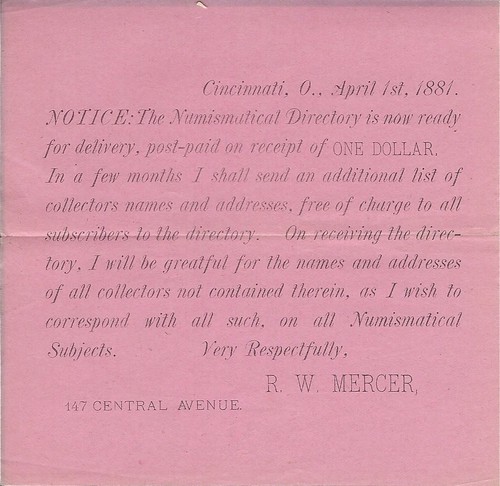
He is best known for his publication of Mercer’s Numismatic Directory in the second half of 1881.
In the September 1881 issue of Numisma he announced the publication of his publication, The Collector’s Guide, for thirty-five cents per year.
The Cincinnati Enquirer, Thursday, December 24, 1891, page 12 tells us more profoundly about the character of Robert Wood Mercer in a public notice of divorce titled "Mercer's Misery".
R.W. Mercer, the curiosity dealer on Central avenue, near Fourth, would probably like to dispose of his wife, Rosetta, "as a relic". This is based upon the allegations of a petition for divorce filed by him yesterday. He says that for seven years they have not lived together as husband and wife, though he has provided for her. He alleges that she has refused to cohabit with him, refused to prepare his meals, mend his clothes or in any way attend to her household duties. She beat him with a poker, called him a libertine, a drunkard and accused him of having a vile disease. He says she sent him and his friends vile letters and postal cards, and called at his store and abused him. He became in fear of his life and had to leave home. They live in the Normandy Building on Race street."
The suggestion by Rosetta Mercer is that her husband while carousing at saloons and houses of ill repute contracted a venereal disease. We shall find his alcoholism and derelict behavior was indeed passed onto his eldest son who, like his father, gets into serious trouble because of it.
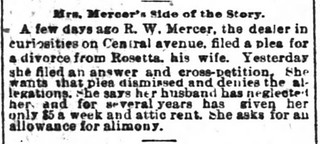
He died June 18, 1894 in Van Wert County, Ohio at 54 years, 2 months and 6 days of his age.
His son Robert W. Mercer, continued his father’s business advertising the reopening of Mr. Mercer’s store doing business as R. W. Mercer & Co., in The Antiquarian in the premiere issue in September 1897. However, the son ran ads in The Museum in July and August 1895 continuing his father’s business uninterruptedly.
To read the complete article, see:
MERCER,
ROBERT WOOD (https://sites.google.com/site/numismaticmallcom/encyclopedic-dictionary-of-numismatic-biographies/mercer-robert-wood)
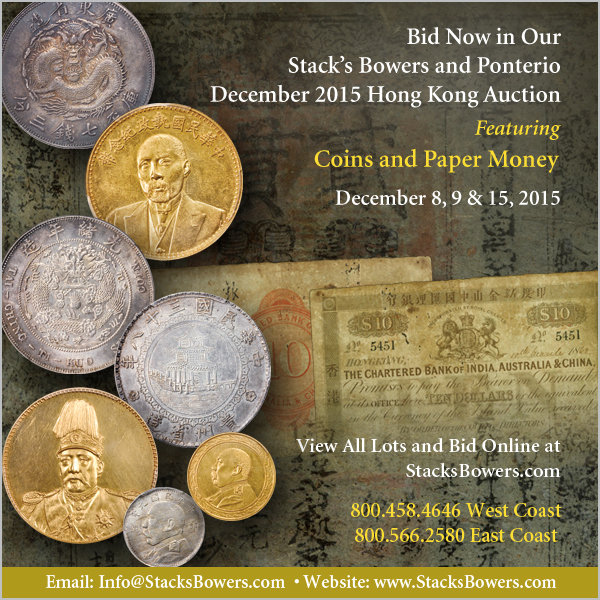
REPEAT AFTER ME: GRAIN = CORN; CORN = MAIZE
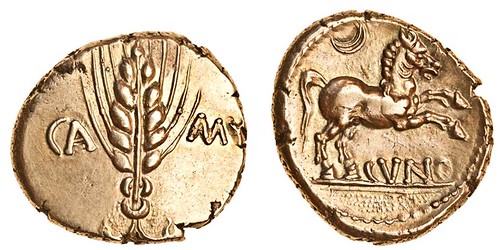
Last week Greg Meyer wrote:
Maybe I am confused.... I thought corn was a new world introduction to Europe after 1492.... But this sale is identifying Celtic coins with a "Classic" layout described as corn.... the image with the intercalating hairs sticking through the grains looks like classic wheat to me...
Jon Radel writes:
American English speakers badly astray. Such as "company" being a plural noun and "corn" being any old grain, most frequently the predominant grain in a given area. So in England "wheat" is "corn" and is not to be confused with that new world "Indian corn" or "maize".
Bruce W. Smith writes:
I have run into this question before. I had always heard that corn was a product of the New World (along with potatoes). But I have seen references to corn depicted on ancient coins. And in medieval England there was an important event resulting in the "Corn Laws". It turns out that the word "corn" was in the English language long before the New World was discovered, as a reference to any kind of grain. Thus we have barleycorn and peppercorn. The grain shown on ancient coins is usually wheat. In the New World, explorers discovered what they called "Indian Corn". In the United States this was shortened to simply "corn". To avoid confusion, we should use the proper name for this product, which is "maize".
Mark Brown writes:
The use of the word ‘corn’ precedes 1492. In fact it goes back at least to 452. It means simply ‘grain’. The OED notes that the term is often used locally to mean the sort of grain predominant among local crops, thus for ‘wheat’ in some parts of England, for ‘oats’ in others, and for ‘maize’ or ‘indian corn’ in the U.S.
Denarius Thrymsa writes:
Greg Meyer expressed some confusion about the use of the word “corn” to describe a stalk of what is obviously wheat on a Celtic gold coin (this was in the article on the sale of the Celtic coins from the Geoff Cottam Collection, specifically Lot 373, a gold Stater of Cubobelin— who, as it happens, was the basis for the “Cymbeline” of Shakespeare’s play, but that’s another story).
“Corn” is actually an Old English word that refers to grain generally— in England itself, it usually means “wheat,” the primary grain of England, while it usually means “oats” when referring to Scottish grain, and it usually means “barley” when referring to grain in Southern Italy (as on the coins of Metapontion).
When the English settlers came over to the New World, they used “corn” to refer to the most common grain they encountered on this side of the pond. The English back in England usually call that yellow grain “maize,” borrowing from the Spanish who took it from one of the native languages. The Geoff Cottam Collection was being sold by a British firm, and they used "corn" in the usual British sense of the word. You see the same thing in the Spink Coins of England and the United Kingdom catalog, see #'s 281, 283, 286, etc.
Bob Van Arsdell writes:
In Britain, wheat is commonly referred to as "corn". The wheat ears on Ancient British coins are always referred to as "corn ears". My website conforms to British practice. So what do they call American corn? - Maize
To read the complete article, see:
www.vanarsdellcelticcoinageofbritain.com/plates/plate_83.html
To read the earlier E-Sylum article, see:
NOTES FROM E-SYLUM READERS: NOVEMBER 29, 2015 : Corn or Wheat?
(www.coinbooks.org/esylum_v18n48a12.html)
QUIZ ANSWER: MARK TWAIN AT THE SAN FRANCISCO MINT
Well, although we mentioned this once before in The E-Sylum, no one ventured a guess. Twain’s friend was writer Bret Harte, and the location was Harte’s office at the San Francisco Mint. Below is an excerpt from Bret Harte by Henry Boynton, New York, 1903, p22-25. -Editor
Among the casual presences attracted by that old California was a certain Sam Clemens who had begun to write over the signature of Mark Twain but had received no general recognition. Curiously enough it was through Bret Harte and The Californian that his first hit was made. A month after their first meeting Mr Clemens called on Harte, who tells this story:
“He had been away in the mining districts on some newspaper assignment in the meantime. In the course of conversation he remarked that the unearthly laziness that prevailed in the town he had been visiting was beyond anything in his previous experience. He said the men did nothing all day long but sit around the bar room stove spit and ‘swop lies.’ He spoke in a slow, rather satirical drawl, which was in itself irresistible. He went on to tell one of those extravagant stories and half unconsciously dropped into the lazy tone and manner of the original narrator.
I asked him to tell it again to a friend who came in and then asked him to write it out for The Californian. He did so and when published it was an emphatic success. It was the first work of his that had attracted general attention and it crossed the Sierras for an Eastern reading. The story was ‘The Jumping Frog of Calaveras.’ It is now known and laughed over I suppose wherever the English tongue is spoken but it will never be as funny to anyone in print as it was to me, told for the first time by the unknown Twain himself on that morning in the San Francisco Mint.”
Bret Harte was at this time secretary to the superintendent of the United States Mint and also had a place upon the staff of The Golden Era to which upon the collapse of The Californian Mark Twain became a frequent contributor. Most of Harte's own work during this period was purely journalistic in effect though he had already produced prose and verse of a literary quality.
To read the complete book on Google Books, see:
https://books.google.com/books?id=hshaAAAAMAAJ&pg=PA22#v=onepage&f=false
To read the earlier E-Sylum articles, see:
HOLABIRD-KAGIN AMERICANA WESTERN STATES TOKEN AUCTION MARCH 2012
(www.coinbooks.org/esylum_v15n13a16.html)
QUIZ ANSWER: THE HARTE-TWAIN NUMISMATIC CONNECTION
(www.coinbooks.org/esylum_v15n14a09.html)

GREENBACKS, GOLD AND AMERICAN CAPITALISM
Pablo Hoffman of New York City writes:
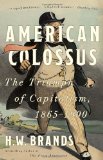 American Colossus: The Triumph of Capitalism, 1865-1900
American Colossus: The Triumph of Capitalism, 1865-1900
Author: H.W. Brands
Publisher: Anchor Books a division of Random House
Copyright 2010 by H.W. Brands
Pages 13-15
At end of the American Civil War, the United States had become the world's largest economy. During the War, national wartime legislation banned state banks from issuing currency, introduced a national currency (the "greenback"), and imposed the first U.S. income tax which had the practical effect of supporting that currency. All of this centralized and boosted U.S. financial activity, and when durable transatlantic telegraphic connections were finally achieved in 1866 -- New York took a giant step toward its place as the center of the financial world:
"The wartime measures diminished the anarchy in the [state bank currency based] money system, but considerable uncertainty remained. The constitutionality of [this] financial program was open to serious question. The Constitution said the federal government can 'coin' money. Did that mean it could print money as well? Did the proscription against state bank notes follow from the commerce clause, from the elastic clause, or from Treasury secretary Salmon P. Chase's imagination? As for the income tax, That seemed a patent violation of the constitutional ban on 'direct' truces not proportioned to population.
"Until the courts settled the constitutional questions, the postwar financial markets faced the problem of accommodating the dual money system. Gold dollars and greenbacks competed directly with each other for the affections of merchants and investors, and indirectly for the affections of everyone else. ... The relative prices of the two currencies fluctuated according to the laws of supply and demand, and the fluctuating attracted speculators, who tried to anticipate the direction of the market. From anticipation to manipulation was a short, tempting step.
"Gold transactions took place in a special room in the neighborhood of lower Manhattan that had become the financial hub of the country. In colonial days Boston had been the center of finance, followed by Philadelphia in the early national period. But New York's central location, its unsurpassed harbor, and the ambitions of the heirs of its Dutch founders made it a worthy rival to its northern and southern neighbors.
"New York's traders organized themselves on Wall Street in the 1790s, gathering under a buttonwood tree to forge an agreement establishing rules for buying and selling bonds and shares of companies. The traders eventually moved indoors, gaining credibility with the growth of the city's economy, especially after the opening of the Erie Canal in 1825. The demise of the Philadelphia-based Bank of the United States (at the hands of Andrew Jackson) crippled New York's primary rival, and by the time California gold began flowing east, New York was the clear leader in American finance. The energy of its brokers in selling Union bonds during the Civil War cemented its primacy."
Delanceyplace.com is a brief daily email with an excerpt or quote we view as interesting or noteworthy, offered with commentary to provide context. There is no theme, except that most excerpts will come from a non-fiction work, primarily historical in focus, and will occasionally be controversial. Finally, we hope that the selections will resonate beyond the subject of the book from which they were excerpted.
To read the complete article, see:
NEW YORK TAKES ITS PLACE AT THE CENTER OF THE WORLD -- 11/30/15
(http://delanceyplace.com/view-archives.php?p=2947)
EDMONTON AMALGAMATION CELEBRATION MEDAL
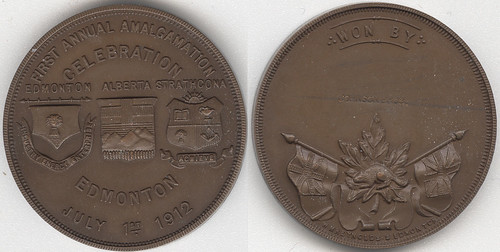
I received this interesting medal in a consignment a decade ago. I had no clue what it was but had several periods of interest which resulted in researching its background. Talking to librarians and archivists in Canada, along with copies of newspaper articles from the time resulted in the mystery being solved. The towns of Edmonton and Strathcona were situated on the opposite side of the North Saskatchewan River, Edmonton in Alberta and Strathcona in Saskatchewan.
In 1911 both cities had a public vote concerning unifying into one city (Edmonton) in Alberta. The towns voted 1185-274 in favor of amalgamation. They celebrated an Amalgamation day in 1912, part of which was celebratory athletic games and contests. Thirty of these medals were minted for the winners of the games, with their names lightly stamped into the medal. This one was won by The Johnson Brothers.
Michael adds:
Two weeks ago I asked about several medals from a very hard to find catalog, the 1978 NASCA Wayte Raymond Sale #2. I received many contacts, e-mailed scans of both the listings and 2 of the medals as well as mailed copies. Many thanks!
To read the earlier E-Sylum article, see:
NOTES FROM E-SYLUM READERS: NOVEMBER 22, 2015 : Query: NASCA Wayte Raymond Part 2
Catalog Sought (www.coinbooks.org/esylum_v18n47a09.html)

Archives International Auctions, Part XXX
U.S., Chinese & Worldwide Banknotes, Scripophily,
Coins and Security Printing Ephemera
December 11th & 14th, 2015
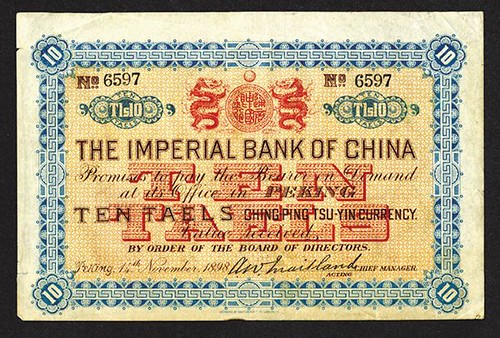
Click the links! Highlights include:
- Lot 72: Republica De Chile, 1898 Provisional Issue
- Lot 87: National Bank of the Danish West Indies 1905 Issue
- Lot 242: Banco Nacional Del Paraguay, 1886 Issue Proof
- Lot 284: United Arab Emirates Currency Board, 1973; Specimen Set
- Lot 393: All Russian Central Union of Consumer Societies, 1920 Specimen Banknote
- Lot 503: Bodie Bluff Consolidated Gold Mining Co Stock Certificate
- Lot 674: American Bank Note Co., "Cincinnati" Business Ad Card.
- Lot 832: FRN, Boston, $5, 1914, Fr#846, Burke | Houston
- Lot 2046: Imperial Bank of China, 1898 Peking Branch Taels Issue
- Lot 2074: Bank of China, 1912 "Mukden - Manchuria" Branch Issue Rarity.
- Lot 2098: Bank of Communications, 1927 "Hankow" Branch Issue Rarity.
- Lot 2155: National Bank of China, 1921 Issue - Possible Unlisted Color.
- Lot 2208: Bank of Canton Ltd. 1920 Issue.
- Lot 2316: Kwang Tung Sat Yip Bank, Swatow ca.1900 Private Banknote.
- Lot 2358: Republik Indonesia Serikat, 1949 Essay Banknote.
- Lot 2379: Pogrebetsky Plate Notes from 1929 Banknote Book.
View the Virtual Catalog
Download the Catalog in PDF format
ARCHIVES INTERNATIONAL AUCTIONS, LLC
1580 Lemoine Avenue, Suite #7
Fort Lee, NJ 07024
Phone: 201-944-4800
Email: info@archivesinternational.com
WWW.ARCHIVESINTERNATIONAL.COM
HIGHLIGHTS FROM ARCHIVES DECEMBER 14, 2015 SALE
Lot 2046: Imperial Bank of China, 1898 Peking Branch Taels Issue

China, 14th November, 1898, 10 Taels, P-A42a, S/M#C293-4b, Issued banknote, brown text with blue border on light orange underprint, facing dragons flank seal on top, S/N 6957, Crisp VF condition. Extremely rare note that is seldom seen at auction and is the second example of this type that we have offered in the last 8 years and the finest of the two
To read the complete lot description, see:
Imperial Bank of China,
1898 Peking Branch Taels Issue
(http://auction.archivesinternational.com/Imperial-Bank-of-China-1898-Peking-Branch-Taels-Issue_i23715648)
Lot 2074: Bank of China, 1912 "Mukden - Manchuria" Branch
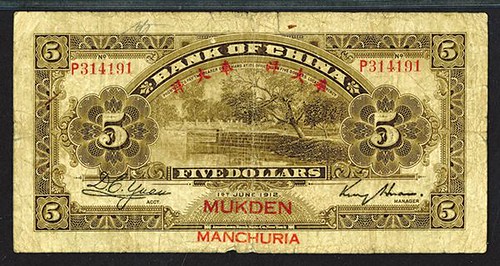
China, $5, P-26m S/M#C294-31m, Issued banknote, Black with Portrait of Emperor Huang-ti at left gazebo at right, back brown with red 6 Chinese Character overprint under curved title at top and overprinted in English in red MUKDEN and in the lower margin MANCHURIA. Serial# P314191, PMG graded Choice Fine 15 NET, Attractive note with tape remnants on the top margin, the small ovals on the right and left front have ink abraded, but otherwise and extremely rare and very presentable banknote. This is the only example ever graded in the PMG census. ABNC.
To read the complete lot description, see:
Bank of China, 1912
"Mukden - Manchuria" Branch Issue Rarity.
(http://auction.archivesinternational.com/Bank-of-China-1912-Mukden-Manchuria-Branch-Issue-Rarity_i23715676)
Lot 2098: Bank of Communications, 1927 "Hankow" Branch

Hankow, China, $1, P-145UNL, S/M#C126-, Orange on m/c with locomotive in middle, back orange with the place name "Hankow" engraved into plate, Issued banknote, S/N A757004H, PMG graded Good 6, Rare branch offering. ABNC. First time we have offered this variety and it is possibly unique
To read the complete lot description, see:
Bank of Communications,
1927 "Hankow" Branch Issue Rarity.
(http://auction.archivesinternational.com/Bank-of-Communications-1927-Hankow-Branch-Issue-Rarity_i23715700)
Lot 2155: National Bank of China, 1921 Issue

Canton, China, $1, Similar to P-514, S/M#C261-11, but has black vignette of SYS flanked by trees with green border and light green underprint instead of the listed black vignettes on blue border with pink underprint. The back is purple and light green with three men and farmer with oxen. S/N 17108, PMG graded Very Fine 20 NET with note of foreign substance and light graffiti, otherwise intact borders, 5 very small pin holes, firm paper quality and nice corners. First time seen by the cataloger and offered by our company. This note is sure to attract considerable interest and will be a centerpiece of any advanced collection.
To read the complete lot description, see:
National Bank of
China, 1921 Issue - Possible Unlisted Color.
(http://auction.archivesinternational.com/National-Bank-of-China-1921-Issue-Possible-Unlisted-Color_i23715757)
Lot 2208: Bank of Canton Ltd. 1920 Issue.
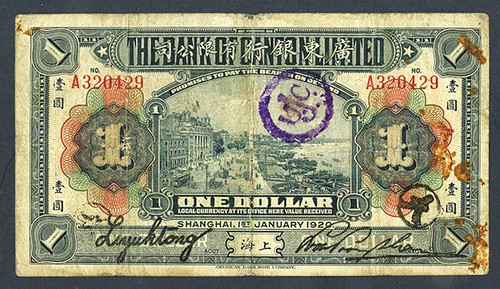
China. Republic. 1 Dollar. SCWPM S153F. Shanghai riverfront at center. Hong Kong Island at center on back. Rust stains at right, strong center fold, merchant hand stamps on each side. Very scarce.
To read the complete lot description, see:
Bank of Canton Ltd. 1920 Issue.
(http://auction.archivesinternational.com/Bank-of-Canton-Ltd-1920-Issue_i23715810)
Lot 2316: Kwang Tung Sat Yip Bank, Swatow ca.1900 Private Banknote.
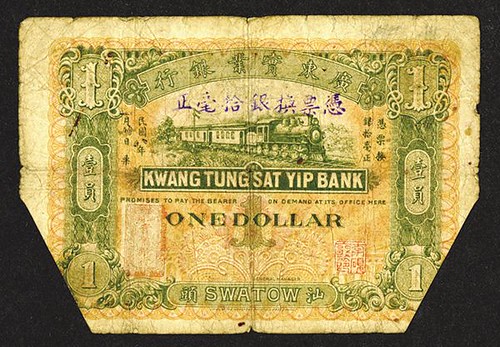
Swatow, China, $1, P-Unlisted, S/M Unlisted, Olive Green on light orange with locomotive at top with purple hand stamp on top, back purple with coin vignette on back, Choice VG to Fine condition. HK Printing Press.
To read the complete lot description, see:
Kwang Tung Sat Yip
Bank, Swatow ca.1900 Private Banknote.
(http://auction.archivesinternational.com/Kwang-Tung-Sat-Yip-Bank-Swatow-ca-1900-Private-Banknote_i23715918)
Lot 2358: Republik Indonesia Serikat, 1949 Essay Banknote.
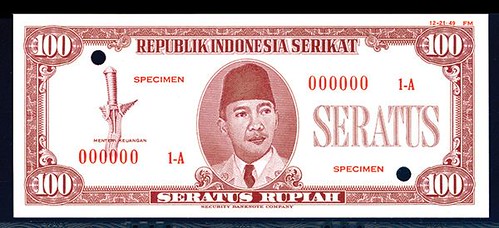
Indonesia, 1949, 100 Rupiah, P-Unlisted100a, Specimen banknote, Essay specimen banknote of a Security BNC proposed and never issued 1949 Indonesia banknote Series. Note is dated December 21, 1949, Block 1-A, S/N 000000, Red specimen overprints, POC's. Small red printing on upper right margin of face reads "12-21-49 FM" and back "12-21-49 BM". Front is maroon, back is maroon. Face with portrait of Sukarno, Back with farmer plowing with oxen. Evidently Indonesia did not accept this issue. PMG graded Gem Uncirculated 66 EPQ. Rare essay note. SBNC
To read the complete lot description, see:
Republik Indonesia Serikat,
1949 Essay Banknote. (http://auction.archivesinternational.com/Republik-Indonesia-Serikat-1949-Essay-Banknote_i23715960)
Lot 2379: Pogrebetsky Plate Notes from 1929 Banknote Book.
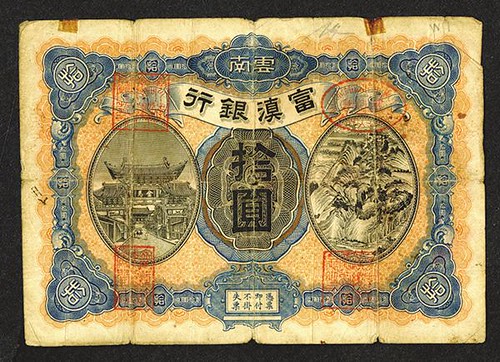
Fu-Tien, China. ND, ca.1910-20's, $10, P-Unlisted, face has black text, blue frame and orange underprint with gate at left and mountain and water scene at right, back is red on light blue underprint, Issued, S/N 55437, Choice Fine condition with 3 strong vertical folds and 1 horizontal fold with 2 small areas of tape remnants, otherwise bright colors and firm paper body only enhance this rare note. The back English title is "The Yunnan "Foo Tien" Bank. This is the plate note pictured in Pogrebetsky's rare banknote book from his personal reference collection.
To read the complete lot description, see:
Pogrebetsky Plate Notes from
1929 Banknote Book. (http://auction.archivesinternational.com/Pogrebetsky-Plate-Notes-from-1929-Banknote-Book_i23715981)
CNG DR. LAWRENCE A. ADAMS PART III SALE HIGHLIGHTS
Classical Numismatic Group of Lancaster, Pennsylvania and London, England is proud to present Part III of the Dr. Lawrence A. Adams collection of ancient to modern gold coinage of the world, which is being sold as part of the firm’s Triton XIX sale. Triton XIX is a Public, Internet, and Mail Bid Sale to be held in conjunction with the 44th Annual New York International Numismatic Convention (NYINC) on January 5-6, 2016. The NYINC is held at the Waldorf-Astoria Hotel, located at 301 Park Avenue, New York, NY 10022, between 49th and 50th Streets.
Part III of the Adams collection is featured in the second catalog for Triton XIX, and will be sold in two sessions on Wednesday, January 6, 2016. This part of the Adams collection includes 801 lots of ancient Greek, Celtic, Oriental Greek, Central Asian, Roman Provincial, Roman Republican, and Roman Imperial coinage. Additionally, there are featured selections of Early Medieval & Islamic, World, and British Coinage, as well as Olympic and World medals. The pre-sale estimate total for Part III of the Adams collection is $5.6 million.
Dr. Adams formed his collection over the past 50 years, and the collection encompasses coins of the world from antiquity to the present day. Many of the ancient coins come from some of the most important sales of the last century, such as the Brand, Garrett, Jameson, and other collections.
Within the context of ancient and early medieval coinage, this third sale will have strong offerings of South Italian & Sicilian, Carthage, the Kings of Bosporos, the Seleukid Empire, the Ptolemaic Empire, the Kushan Empire, the Kushano-Sasanian kings, Roman Republican, and the Restitution Series of Trajan aurei. There are also examples of gold coinage of the Ostrogoths, Lombards, Merovingians, Carolingians, and the Ottoman Empire.
The world section of over 500 lots offers a look at coins from Afghanistan to Zanzibar, with particular strengths in France, India (Mughals, Princely States & Colonial), Italy, the Low Countries, Poland, Transylvania, and Vietnam. The medals section includes some important modern Olympic pieces.
Selecting highlights from the 800 coins on offer is difficult for such a diverse group of coins, but just a few of the individual highlights from the Adams Collection are:
Largest Carthage Electrum Denomination

Lot 2030–CARTHAGE, First Punic War. Circa 264-241 BC. EL Tristater (29.5mm, 22.40 g, 12h). Uncertain mint in Sicily. Head of Tanit left, wearing wreath of grain ears, triple-pendant earring, and necklace / Horse prancing right; palm tree in background, B’RŠT (in Neo-Punic) below. Jenkins & Lewis Group VIII, 327 = Jenkins, Punic, Part IV, p. 54, dies O1/R6; CNP 211; SNG Lockett 1063 (same dies); Basel 568 (same obv. die); Gulbenkian 377 = Walcher de Molthein 456 (same dies); Jameson 922 (same dies); Sartiges 387 (same rev. die). Near EF, toned, a little die wear on obverse. Very rare, only sixteen known to Jenkins, ten of which are in museums, none in CoinArchives.
Gold Taken from Athena Parthenos
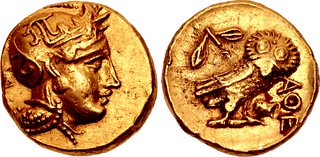
Lot 2041–ATTICA, Athens. 295 BC. AV Stater (17mm, 8.60 g, 9h). Head of Athena right, with profile eye, wearing crested Attic helmet decorated with a “pi-style” palmette, disk earring, and pearl necklace / Owl standing right, head facing; olive sprig and crescent to left, AΘE and Eleusis-ring to right. J. Kroll, “The Reminting of Athenian Silver Coinage, 353 B.C.” in Hesperia 80 (2011), fig, 12, b; Svoronos, Monnaies, pl. 21, 17 = Jameson 1193 (same rev. die); HGC 4, 1577; SNG Copenhagen 83; BMC 129–31; Boston MFA 1099; Gillet 946; Gulbenkian 925 = Weber 3499. Near EF, a few scattered marks, minor deposits on reverse. Very rare.
Unique Stater of Pharnakes I
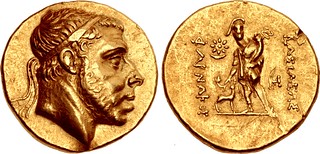
Lot 2053–KINGS of PONTOS. Pharnakes I. Circa 200-169 BC. AV Stater (19.5mm, 8.47 g, 12h). Amisos mint. Diademed head right / BAΣIΛEΩΣ ΦAPNAKOY, male figure, wearing flat headdress, holding cornucopia in right hand, vine branch in left, from which a deer, standing right, feeds, on his left; MH monogram to inner right. Callataÿ, First, dies O1/R1, and fig. 15 = Göbl, Antike 877A (this coin); HGC 7, 322 (this coin illustrated); Alram 26 (this coin referenced and illustrated). Good VF, light scuff and edge mark on reverse. Unique.
Portrait Gold Issue for Charlemagne
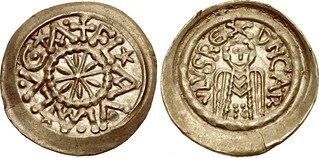
Lot 2207–CAROLINGIANS. Charlemagne (Charles the Great). As Charles I, King of the Franks, 768-814. AV Tremissis (17mm, 0.98 g, 11h). Lucca mint. + FL (star) A VI • A (star) LVC (star) A •, D • N CA•R VLVS RЄX, facing half-length bust. Bernareggi –; Bernareggi, Tremissi –; Bernareggi, Moneta, –; Depeyrot 515B = CNI IX 1 = Gariel 172 = Kluge 199; BMC Vandals –; Arslan –; MEC 1, –; E&S p. 213. EF, lightly toned. Extremely rare, second example of this variety known.
BOHEMIA, Holy Roman Empire Ferdinand III Dukát
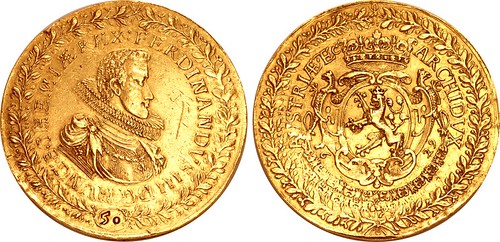
Lot 2258–BOHEMIA, Holy Roman Empire. České království (Kingdom of Bohemia). Ferdinand III. 1627-1657. AV 50 Dukát (75mm, 172.4 g, 12h). Commemorating his Coronation as King of Hungary & Bohemia. Praha (Prague) mint. Dated 1629. FERDINANDVS · III · D : G : HVNG : BOHEMIÆ · REX :, armored and draped bust right, wearing elaborate ruff and Collar of the Order of the Golden Fleece; all within wreath; 50 (denomination) engraved in medallion at bottom of wreath / AVSTRIÆE ARDCHIDVX, crowned garnished coat-of-arms with dragon supporters above Collar of the Order of the Golden Fleece; 16 29 below; all within wreath. Herinek 82; Dietiker –; KM –; Friedberg 44. VF, scattered marks and scratched, edge knocks, double struck.
Portrait Mohur of Jahangir
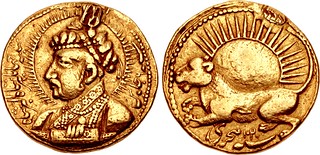
Lot 2396–INDIA, Mughal Empire. Nur al-Din Muhammad Jahangir. AH 1014-1037 / AD 1605-1627. AV Mohur (23mm, 10.99 g, 11h). Portrait type, Class A. Dually dated AH 1020 and RY 6 (16 March – 14/23 October AD 1611). shabih-e Jahangir Shah Akbar Shah (likeness of Jahangir Shah [son of] Akbar Shah) in Persian to left, sanat 6 jalus (regnal year 6) in Persian to right, bust left; left hand resting hand on throne / Lion recumbent left; radiate sun behind; sanat 1020 hijri (year 1020 of the Hijra) in Persian to right. BM 312; Wright 587; Hull 1437; KM 179.1; Friedberg 758. VF, remains of suspension loop mounting. Very rare contemporary issue presented to preferred courtiers.
Zodiac Mohur
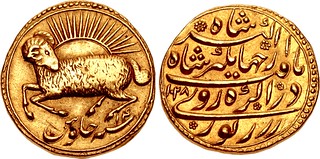
Lot 2399–INDIA, Mughal Empire. Nur al-Din Muhammad Jahangir. AH 1014-1037 / AD 1605-1627. AV Mohur (22mm, 10.91 g, 4h). Zodiac Type, Class A. Agra mint. Dually dated AH 1028 and RY 14 (19 December AD 1618 – 14/23 October AD 1619). Constellation of Varak/Mesha (Aries the Ram): ram, head right, recumbent left; radiate sun behind; sanat 14 jalus (regnal year 14) in Persian below / zar zewar dar Agra ruye yaft az Jahangir Shah Akbar Shah (Received ornament on gold at Agra from Jahangir Shah [son of] Akbar Shah) in Persian verse; AH date to left. BM 322; Wright 570; Hull 1379; KM 180.1; Friedberg 762. Good VF, lightly toned, minor spot of deposit on obverse.
LOW COUNTRIES Rijksdaalder
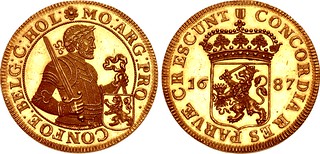
Lot 2557–LOW COUNTRIES, Republiek der Zeven Verenigde Nederlanden (Dutch Republic). Holland. 1581-1795. AV ‘Rijksdaalder’ (40mm, 34.63 g, 12h). Dordrecht mint. Dated 1687. Armored half-length bust right, holding sword over shoulder and coat-of-arms on ribbon / Crowned coat-of-arms. P&W Ho 40.3; CNM 2.28.77; KM –; Friedberg –. Choice EF, frosted proof-like strike, minor edge ding. Off-metal strike in gold.
TRANSYLVANIA Acatiu Barcsai Dukát
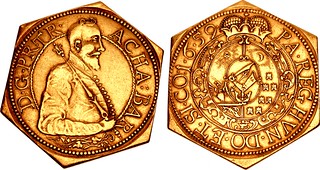
Lot 2684–TRANSYLVANIA, Principality. Acatiu Barcsai. 1658-1660. Hexagonal AV 10 Dukát (40mm, 35.05 g, 12h). Cluj-Napoca (Klausenburg / Kolozsvár) mint. Dated 1659. Bust right, holding lis-tipped scepter over shoulder / Crowned coat-of-arms. Resch 1A; MBR 2228; KM 323 (5th edition – this coin illustrated); Friedberg 375. Good VF. Extremely rare – none on CoinArchives.
IRELAND. James II Shilling
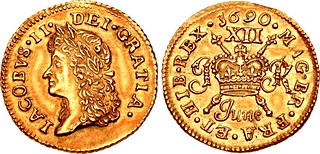
Lot 2752–IRELAND. James II. 1685-1691. Proof AV ‘Shilling’ (23mm, 5.87 g, 12h). ‘Gunmoney’ coinage. Dublin or Limerick mint. Dated June 1690. Laureate head left / Crown over two scepters crossed in saltire; J R in script across field, XII above, June in script below. D&F 444; SCBC 6582g. Near EF, toned, scratches. Extremely rare. Lot viewing for Triton XIX will begin on Sunday, January 3rd, from 1PM until 7PM in the Carnegie Suite, located on the 18th floor of The Waldorf-Astoria Hotel. The complete lot-viewing schedule for Triton XIX is:
Sunday, January 3, 2016 – 1PM until 7PM;
Monday, January 4, 2016 – 9AM until 7PM;
Tuesday, January 5, 2016 – 8AM until 6PM; and
Wednesday, January 6, 2016 – 8AM until Noon.
Auction lots will also be available for viewing at the Pennsylvania offices of CNG from Tuesday, December 1st, 2015 until Wednesday, December 30th, 2015 by appointment only, with the exception of Friday and Saturday, December 11-12, 2015, when select lots will be on exhibit at the Bay Area Historical Bourse (BAHB). The BAHB is held at the Holiday Inn Golden Gateway, Van Ness and California Streets, San Francisco, CA from 10AM until 6PM each day. Please note that CNG’s office hours will be limited during the holiday season.
The auction sessions for Triton XIX will be held in the Norse Suite, also located on the 18th floor of The Waldorf-Astoria Hotel. Triton XIX will be conducted over four sessions with the morning sessions beginning promptly at 9:00 AM on Tuesday, January 5th, and Wednesday, January 6th, 2015, and the afternoon sessions will start at 2 PM on the same days.
In addition, there will be an online, Internet-only, Session 5 for Triton XIX, which CNG will be conducting as our Electronic Auction 366, and will open for bidding on December 16, 2015. E-Sale 366 will feature over 1,000 lots, including Part 4 of the Dr. Lawrence A. Adams Collection of Ancient and World Gold Coinage, and will close on Wednesday, January 13, 2016.
Printed catalogs for Triton XIX will be available after December 1, 2015. To order a catalog, please visit www.cngcoins.com. Catalogs are $100 to North American addresses, and $125/£85 to the rest of the world. Payment may be made by U.S. $ check or Visa/MasterCard. Catalogues will be mailed to customers on CNG’s active mailing list.
CNG is currently accepting consignments for its next mail bid auction, CNG 102, scheduled for May 18, 2016. The consignment deadline is Friday, January 15, 2016.
For further details and any additional information, please contact CNG, Inc. at:
Classical Numismatic Group, Inc.
P.O. Box 479
Lancaster, PA 17608-0479
Telephone: (717) 390-9194
Fax: (717) 390-9978
Email: cng@cngcoins.com
CNG TRITON XIX SALE HIGHLIGHTS
Classical Numismatic Group of Lancaster, Pennsylvania and London, England is proud to present Triton XIX, a Public, Internet, and Mail Bid Sale to be held in conjunction with the 44th Annual New York International Numismatic Convention (NYINC) on January 5-6, 2016. The NYINC is held at the Waldorf-Astoria Hotel, located at 301 Park Avenue, New York, NY 10022, between 49th and 50th Streets. Triton XIX consists of two separate catalogs: the first catalog features 993 lots of ancient Greek, Celtic, Oriental Greek, Central Asian, Roman Provincial, Roman Republican, and Roman Imperial coinage. Additionally, there are featured selections of Byzantine, Early Medieval, Islamic, World, and British Coinage. The pre-sale estimate total for Triton XIX, Part I is $7.2 million. Part II of Triton XIX features the third part of the Dr. Lawrence A. Adams Collection of Ancient & World Gold Coinage. A separate press release has been prepared for the Adams sale.
Triton XIX, Part I, to be sold on Tuesday, January 5th, 2016, features selections from several important collections including: important Judaean coins from the David Hendin collection; Greek and Roman coins from the J. Eric Engstrom collection; Roman coins from the V. Robert Chiodo collection; and Part I of the Dr. Andrew Wayne collection of Anglo-Saxon coinage.
Additionally, Part I of Triton XIX features an exceptional offering of Greek coinage, including pieces from the former collections of Brand, Desneux, Gillet, Jameson, Löbbecke, Lockett, Moretti, Sartiges, Trampitsch, and Woodward.
Other highlights include: a facing head Syracuse tetradrachm of Kimon; the Ghazzat Hoard of archaic Greek coinage; a Brutus portrait aureus and an Eid Mar denarius; an impressive selection of Roman aurei and solidi; a very rare Delmatius solidus from the Jameson and von Schulthess-Rechberg collections; an iconic Umayyad AH 77 gold dinar; and an extremely rare Chinese gold 1949 “Memento Dollar”.
Just a few of the individual highlights from Triton XIX, Part I are:
SICILY, Naxos. Circa 461-430 BC. AR Drachm

Lot 44–SICILY, Naxos. Circa 461-430 BC. AR Drachm (19mm, 4.32 g, 7h). Bearded head of Dionysos right, wearing tainia decorated with an ivy branch / Silenos, nude and bearded, squatting half-left, holding kantharos in right hand and resting his left on his knee, tail behind; N-A-XI-ON around; all within shallow concave circular incuse. Cahn 55.1 (V40/R46) = Gillet 484 = Sartiges 110 = H. Dannenberg, Grundzüge der Munzkunde (1912), pl. I, 7 = J. Friedländer, “Die Erwerbungen des Koniglichen Miinzkabinets vom 1. Januar 1877 bis 31. März 1878.” in ZfN 6 (1879), p. 10 and pl. I (this coin); Rizzo pl. XXVIII, 13; SNG Lloyd 1151 = Weber 1467; Basel 385; SNG Lockett 841 = Pozzi 508; Jameson 674; de Luynes 1063; McClean 2467 (all from the same dies). Superb EF, lovely deep cabinet tone. Among the finest examples of the type, with a choice pedigree.
An Exceptional Year Five Shekel
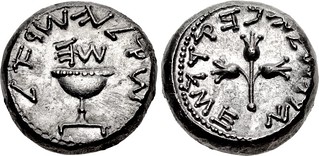
Lot 306–JUDAEA, Jewish War. 66-70 CE. AR Shekel (22mm, 13.68 g, 12h). Jerusalem mint. Dated year 5 ([August] 70 CE). Omer cup; “Y[ear] 5” (date) in Hebrew above, “Shekel of Israel” in Hebrew around / Sprig of three pomegranates; “Jerusalem the holy” in Hebrew around. Meshorer 215; Kadman 45 (same obv. die as illustration); Hendin 1370 (same obv. die as illustration); Bromberg 389 (same obv. die); Shoshana I 20221 (same obv. die); Sofaer –; Spaer –. EF, lightly toned. Very rare, and among the finest known, far superior to those in CoinArchives.
The Ides of March
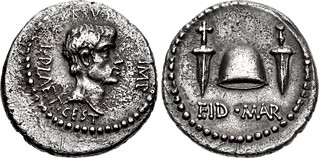
Lot 421–The Republicans. Brutus. Late summer-autumn 42 BC. AR Denarius (18mm, 3.59 g, 12h). Military mint traveling with Brutus and Cassius in western Asia Minor or northern Greece; L. Plaetorius Cestianus, magistrate. Bare head of Brutus right; BRVT above, IMP to right, L • PLAET • CEST around to left / Pileus between two daggers pointing downward; EID • MAR below. Crawford 508/3; Cahn 22 (same dies); CRI 216; Sydenham 1301; RSC 15; RBW –. Good VF, deeply toned, a little off center and minor porosity on obverse. Very rare
VICTORIAE BRIT
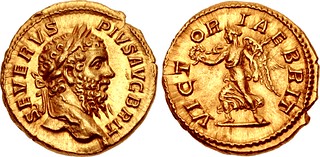
Lot 595–Septimius Severus. AD 193-211. AV Aureus (19mm, 7.10 g, 6h). Rome mint. Struck AD 210-211. SEVERVS PIVS AVG BRIT, laureate head right / VICT OR IAE BRIT, Victory, winged and draped, advancing left, holding up wreath in right hand and palm frond upright in left. RIC IV 334; Calicó 2564; BMCRE 60 (same dies); Biaggi –; SCBC 649 (same dies). EF, toned, underlying luster. Very rare.
Struck to celebrate the success of the Roman military campaigns in Scotland from AD 209 through early AD 211.
Iconic Rarity of the Umayyad Caliphate
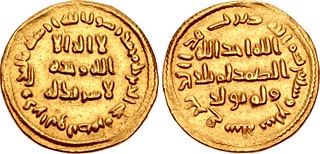
Lot 712–ISLAMIC, Umayyad Caliphate. temp. 'Abd al-Malik ibn Marwan. AH 65-86 / AD 685-705. AV Dinar (20mm, 4.24 g, 6h). Unnamed (Dimashq [Damascus]?) mint. Dated AH 77 (AD 696/7). First portion of the kalimat at-tawḥīd: lā ilāha illā-llāhu waḥdahu lā sharīka lahu (there is no god except Allah, and one [is] he; (there is) no partner to him) in three lines; in outer margin, the “Umayyad Second Symbol” (Sura 9 [al-tauba]:33): muḥammadur rasūlu-llāh arsalahu bi-’lhudā wa dīn al-haqq lī-yuzhirahu ’ala al-dīn kollihi walau kariha al-mushrikūn (Muhammad id the messenger of Allah; him He sent with guidance and true faith to make it prevail over all other faiths even though the polytheists may hate it) / The “Umayyad Symbol” (Sura 112 [al-ikhlas]) Āllah ahad Āllah āl-samad lam yalīd wa lam yalūd (Allah [is] One; Allah [is] the Eternal, the Absolute; not begetting and not begotten) in three lines; in outer margin, b-ismi-llāh zarb hazā āl-dinār fī sanat seb’ wa seb’īn (in the name of Allah struck this dinar in the year seven and seventy (after the Hijra)). AGC I 41; SICA 2, 1 (same dies); Walker, Arab-Byzantine, 186; Album 125; W 155. EF, minor edge marks. Very rare.
GERMANY Friedrich III der Weise (the Wise)
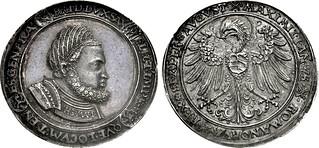
Lot 744–GERMANY, Sachsen-Ernestinische Linie (Kurfürstentum). Friedrich III der Weise (the Wise). 1486-1525. AR Guldengroschen (49mm, 28.76 g, 11h). Hall mint. Struck 1512. Armored bust right, wearing embroidered cap / Nimbate eagle facing with wings spread, head left. Davenport 9699; Schnee 37; Merseburger 417. In NGC encapsulation graded MS 63. Among the finest known.
ANGLO-SAXON, Kings of Mercia. Offa.
Lot 869–ANGLO-SAXON, Kings of Mercia. Offa. 757-796. AR Penny (17mm, 1.29 g, 11h). Light coinage, portrait type. Canterbury mint; (Ealred, moneyer). Struck circa 779-792/3. ΘFFA RЄX, bareheaded bust right / O F (Rx) (Mercian m) on the limbs of a Celtic cross with fleurs in angles, lozenge center containing saltire; trefoil-headed scepter in each angle. Chick 94a = Chick, Towards, pl. I, 10 = EMC 2001.1158 (this coin); SCBI –; BMC 30 (same rev. die); North 290; SCBC 905 (this coin illustrated). Choice EF, deeply toned. A magnificent coin, with an unusually sculptural portrait in high relief. Extremely rare in this condition
Choice Rawlins Pound with Remarkable Pedigree
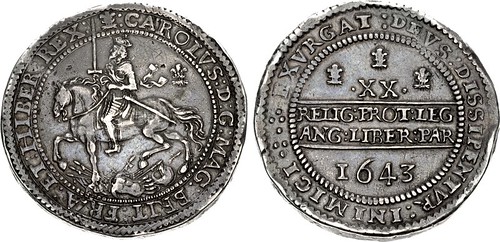
Lot 961–STUART. Charles I. 1625-1649. AR Pound (54mm, 120.20 g, 4h). Declaration type. Oxford mint; im: plume with bads. Dated 1643. CAROLVS : D : G : MAG : BRIT : FRA : ET : HIBER : REX :, Charles, holding reins with left hand and sword in right, on horseback left, trampling arms below; plume to right / EXVRGAT : DEVS : DISSIPENTVR : INIMICI ·:·:·, RELIG : PROT : LEG/ANGL : LIBER : PAR in two lines between parallel lines; three Oxford plumes and XX (mark of value) above, 1643 below. Morrieson, Oxford A/2 (same obv. die as illustration); Brooker 863 (same rev. die); North 2397; SCBC 2938. Good VF, toned, a few light marks. Well struck on a broad flan
Lot viewing for Triton XIX will begin on Sunday, January 3rd, from 1PM until 7PM in the Carnegie Suite, located on the 18th floor of The Waldorf-Astoria Hotel. The complete lot-viewing schedule for Triton XIX is:
Sunday, January 3, 2016 – 1PM until 7PM;
Monday, January 4, 2016 – 9AM until 7PM;
Tuesday, January 5, 2016 – 8AM until 6PM; and
Wednesday, January 6, 2016 – 8AM until Noon.
Auction lots will also be available for viewing at the Pennsylvania offices of CNG from Tuesday, December 1st, 2015 until Wednesday, December 30th, 2015 by appointment only, with the exception of Friday and Saturday, December 11-12, 2015, when select lots will be on exhibit at the Bay Area Historical Bourse (BAHB). The BAHB is held at the Holiday Inn Golden Gateway, Van Ness and California Streets, San Francisco, CA from 10AM until 6PM each day. Please note that CNG’s office hours will be limited during the holiday season.
The auction sessions for Triton XIX will be held in the Norse Suite, also located on the 18th floor of The Waldorf-Astoria Hotel. Triton XIX will be conducted over four sessions with the morning sessions beginning promptly at 9:00 AM on Tuesday, January 5th, and Wednesday, January 6th, 2015, and the afternoon sessions will start at 2 PM on the same days.
In addition, there will be an online, Internet-only, Session 5 for Triton XIX, which CNG will be conducting as our Electronic Auction 366, and will open for bidding on December 16, 2015. E-Sale 366 will feature over 1,000 lots, including Part 4 of the Dr. Lawrence A. Adams Collection of Ancient and World Gold Coinage, and will close on Wednesday, January 13, 2016.
Printed catalogs for Triton XIX will be available after December 1, 2015. To order a catalog, please visit www.cngcoins.com. Catalogs are $100 to North American addresses, and $125/£85 to the rest of the world. Payment may be made by U.S. $ check or Visa/MasterCard. Catalogues will be mailed to customers on CNG’s active mailing list.
CNG is currently accepting consignments for its next mail bid auction, CNG 102, scheduled for May 18, 2016. The consignment deadline is Friday, January 15, 2016. For further details and any additional information, please contact CNG, Inc. at:
Classical Numismatic Group, Inc.
P.O. Box 479
Lancaster, PA 17608-0479
Telephone: (717) 390-9194
Fax: (717) 390-9978
Email: cng@cngcoins.com
THE BOOK BAZARRE
Standard Catalog of World Coins 1701-1800, 6th ed, NEW, $35 shipped!
2014 Standard Catalog of World Coins, 2001-Date, NEW, $17 shipped
2007 FIDEM medal by sculptor Sarah Peters, ANA, Colorado Springs
SAN JOSE GALLEON FOUND: THE HOLY GRAIL OF SHIPWRECKS
The wreck of a Spanish ship laden with treasure that was sunk by the British more than 300 years ago has been found off the Colombian coast, says President Juan Manuel Santos.
"Great news! We have found the San Jose galleon," the president tweeted. The wreck was discovered near the port city of Cartagena.
It has been described as the holy grail of shipwrecks, as the ship was carrying one of the largest amounts of valuables ever to have been lost at sea.
Mr Santos said the cargo was worth at least $1bn (£662m).
The San Jose was carrying gold, silver, gems and jewellery collected in the South American colonies to be shipped to Spain's king to help finance his war of succession against the British when it was sunk in June 1708.
The vessel was attacked by a British warship just outside Cartagena.
Colombian officials would not reveal the precise location of the wreck, but Mr Santos said the find "constitutes one of the greatest - if not the biggest, as some say - discoveries of submerged patrimony in the history of mankind".
He said that a museum would be built in Cartagena to house the ship's treasures.
Ownership of the wreck has been the subject of a long-running legal row. The Colombian government did not mention its long-running quarrel with US-based salvage company Sea Search Armada (SSA) over claims to the treasure.
A group now owned by SSA said in 1981 that it had located the area in which the ship sank.
SSA has been claiming billions of dollars for breach of contract from the Colombian government, but in 2011 an American court ruled that the galleon was the property of the Colombian state.
To read the complete article, see:
Colombia says treasure-laden San Jose galleon found
(www.bbc.com/news/world-latin-america-35014600)
To read the complete article, see:
$1.5BILLION
treasure found on sunken Spanish galleon: First look at the wreck of the San Jose, 300 years after it was sunk by a British warship near
Colombia (www.dailymail.co.uk/news/article-3347952/Wreckage-300-year-old-Spanish-galleon-holding-1-5BILLION-gold-silver-coins.html)
FINDING SHIPWRECKS IS GETTING EASIER AND HARDER
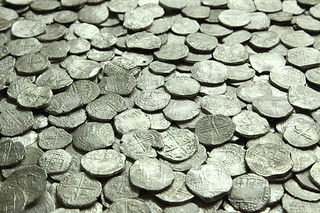 The Spanish galleon San José was overloaded with 200 passengers and 700 tons of cargo on a summer night in 1631 when it smashed into a rock
off the Pacific coast of Panama, spilling silver coins and bars into the Gulf of Panama. More than 400,000 coins and at least 1,417 bars were lost
over a 40-mile trail.
The Spanish galleon San José was overloaded with 200 passengers and 700 tons of cargo on a summer night in 1631 when it smashed into a rock
off the Pacific coast of Panama, spilling silver coins and bars into the Gulf of Panama. More than 400,000 coins and at least 1,417 bars were lost
over a 40-mile trail.
Four hundred years later, that shipwreck has become one of the latest to land in a legal quagmire over who should have the rights to historic artifacts trapped under the sea. This one involves the United Nations, the United States Department of Homeland Security, the government of Panama and Americans accused of being pirates. At issue is whether private companies should be able to claim and profit from historic treasures.
Those questions are of particular interest to businesses in South Florida at a time when technology is making it easier to find and recover sunken loot. The National Oceanic and Atmospheric Administration estimates that there are over 1,000 shipwrecks in the Florida Keys alone.
In the case of the San José booty, commercial treasure hunters, financed in part by an adventure entrepreneur who runs tours to the Titanic, spent over $2 million and 10 years recovering portions of the treasure, only to see their permits questioned and bounty confiscated.
“They called us thieves, looters, plunderers and pirates,” said Dan Porter, a Florida captain who led the expedition to find the San José.
“That’s an insult,” he continued. “I hold this work in the highest regard.”
But the industry is engaged in a battle with academic marine archaeologists and Unesco, the Paris-based United Nations agency that tries to protect cultural treasures around the world. Critics say buried coins and loot should be studied and preserved in a museum, not sported around an investor’s neck.
“Treasure hunters are to maritime archaeologists what astrologers are to astronomers,” said Filipe Castro, a nautical archaeologist at Texas A & M University.
Treasure hunters are hoping for a compromise.
“You should look at these more like an airplane crash or car crash,” said James J. Sinclair, a marine archaeologist hired by IMDI to evaluate the finds. “You don’t leave them at the side of the road and preserve them forever.”
To read the complete article, see:
With Shipwreck Treasure Easier to
Reach, a Duel Is On (www.nytimes.com/2015/12/01/us/with-shipwreck-treasure-easier-to-reach-a-duel-is-on.html)

HARVEY STACK REMEMBERS THE 1940S
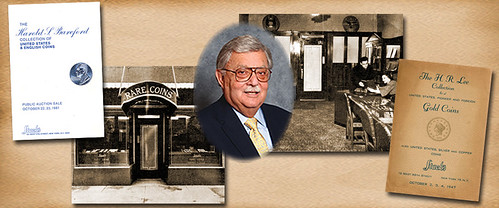
I first became a full-time employee of Stack’s when the firm was located at 12 West 46th Street in Midtown Manhattan. Prior to that I had pitched in part-time at the previous address, 32 West 46th Street, and as a mere youngster I had known our facility at 690 Sixth Street as well.
The 12 West 46th location became the classic “club house” for collectors of the day, attracting them from all over Connecticut and New Jersey, as well as from the five boroughs making up New York City. People could sit comfortably and chat, and Stack’s did not follow commercial numismatic custom of the day, making customers stand up at a counter or else move on.
I remember listening to Harold Bareford and Martin F. Kortjohn, the latter an up-and-coming collector who was American Numismatic Association president, as well as an active leader in several Metropolitan New York area coin clubs. Additions to this list of visitors would be many, including Otto T. Sghia (Bronx Coin club, president of the New York Numismatic Club), Raymond Gallo, Dr. William H. Sheldon, Doug Smith, Dr. Charles Green, Louis E. Eliasberg, and numerous other notable collectors of the time.
An academically trained German numismatic scholar, before he arrived as a refugee in New York, Henry Grunthal started work with Stack’s in the early 1940s, later becoming a dealer on his own and ultimately a curator of the American Numismatic Society. Henry later commented on the gatherings: “During the war, they had a sofa in front of the store and some of these old collectors wouldn’t buy anything, they just sat there and discussed the progress of the war, and about coins they had, but they weren’t there primarily to buy.”
Cornelius C. Vermeule worked for Stack’s in the mid-1940s, before and after a stay in the Financial Department of the U.S. Army. While in service he cataloged the collection of the Bank of Japan. After being with Stack’s he became a curator of the Museum of Fine Arts in Boston. From his days in our West 46th Street store, he recalled: “People would come in, sit, talk about coins, discuss things in a very relaxed club-like fashion, as opposed to today’s hurried, frenetic pace.”
All these collectors became teachers to me and my cousins Benjamin and Norman, and we evolved from this numismatic education and mentoring.
The “club house” brought together a group of leaders in numismatics, which later formed the nucleus of the Metropolitan New York Numismatic Conventions, directed by nine major clubs in the new York, New Jersey, and Connecticut area. They had an annual convention in the spring each year during the 1950s, 1960s and early 1970s. Stack’s was the auctioneer at these conventions. The dinners held at the end of each show became a “roast” of the Stacks, who always arrived late because of the closing of each auction. Harold Bareford, who served as master of ceremonies, always jested at dinner: “I guess you guys were too busy counting your profits from your sale to be on time for dinner! I’m hungry, so sit down so we all can eat!” This was a typical friendly-sarcastic remark one would hear from Harold.
To read the complete article, see:
Harvey
Stack Remembers The 1940s (www.stacksbowers.com/NewsMedia/Blogs/TabId/780/ArtMID/
2678/ArticleID/65472/Harvey-Stack-Remembers-The-1940s.aspx)
DEALER MARK YAFFE SENTENCED TO PRISON
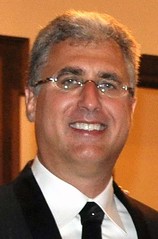 Mark Yaffe is a great guy, 21 witnesses said in federal court Friday.
Mark Yaffe is a great guy, 21 witnesses said in federal court Friday.
Yaffe, a once-wealthy gold coin dealer, raised money for autistic children and assisted living homes. He mentored homeless teenagers, even taking them into his home for months so they could get on their feet and apply themselves in school with newfound diligence.
But good deeds only go so far when you plead guilty to defrauding a bank of more than $3 million.
“You truly have been a wonderful person and an asset to this community,” said U.S. District Judge Charlene Edwards Honeywell, just before she sentenced Yaffe to 20 months in federal prison.
Honeywell did give Yaffe credit for his history of good works, reducing his sentence from the range of 37-46 months recommended in a pre-sentencing report. The judge also agreed, at the defendant’s request, to recommend that the sentence be served at a federal prison in Pensacola.
But the judge said it would not be right to grant Yaffe’s request that he serve one year of house arrest followed by three years of probation.
“It was a serious offense and it involved a significant amount of money - over $3 million,” Honeywell said.
In addition to the prison time, Yaffe, 55, has to pay restitution of $3,049,581 to Sovereign Bank. That’s the amount he is accused of removing from the accounts of National Gold Exchange, a north Tampa company he owned with his brother Alan.
The money was transferred to third parties, court document say, at the same time the company filed for bankruptcy in July 2009. Sovereign Bank was NGE’s largest creditor and had seized the company’s assets after an audit showed several problems, including missing coins and faulty accounting.
Several witnesses testified to Yaffe’s professional reputation as national expert on gold and silver coins. Bill Calderazzo, a retired coin dealer who has known Yaffe since the early 1980s, said he ranked the defendant in the top 10 gold coin dealers in the country.
“He has a knowledge of rare coins you rarely see in anybody,” Calderazzo said.
Phoenix Gold, Yaffe’s latest company, is a powerful player in the rare coin industry, though only six employees work there, Calderazzo said. Yaffe buys all the coins and sells two thirds of them.
Lee Sanders, who handles the gold department at Heritage Galleries in Dallas, said the company would hire Yaffe if he was available and pay him between $250,000 and $500,000 a year.
Before the bankruptcy, Yaffe had built National Gold Exchanges into one of America’s leading gold coin dealers. He and his wife, Christel Yaffe, bought a mansion in the exclusive Avila neighborhood. Yaffe held galas at his home to benefit St. Joseph’s Hospital and Hillsborough Community College, witnesses said.
Yaffe is to report to prison on Jan. 8.
To read the complete article, see:
Coin dealer a 'wonderful person,'
but still headed to prison for fraud (www.tbo.com/news/politics/once-wealthy-coin-dealer-sentenced-for-fraud-20151204/)
To read an earlier E-Sylum article, see:
BANKRUPT COIN DEALER NATIONAL GOLD EXCHANGE SHUTS DOWN
(www.coinbooks.org/esylum_v12n31a30.html)
THE ROYAL MINT’S NEW £50 COIN
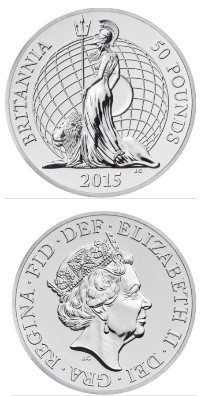 A new £50 coin has been made available by Royal Mint to celebrate the Queen becoming the nation's longest-reigning monarch.
A new £50 coin has been made available by Royal Mint to celebrate the Queen becoming the nation's longest-reigning monarch.
The silver coin is being sold at face value. Demand is limited, with just 100,000 available.
Royal Mint expects it be as popular as others it has previously sold at face value. Coins such as this are normally sold at higher prices to reflect their commemorative value.
Its £20 coin, made available at face value and marking the birth of Prince George in 2013, sold out within days.
The Big Ben £100 coin also proved popular and sold out after just 11 days earlier this year.
As with other commemorative coins, such as those launched to celebrate Princess Charlotte's birth, the value of the £50 coin's precious metal content is not worth the purchase price.
The Britannia 2015 UK £50 Fine Silver Coin contains 31 grams of 999 fine silver. At today’s price of 30p a gram the value of the silver in the coin works out at £9.30. But, from a coin investor’s perspective, the hope is that due to the limited quantities and the historic event it celebrates, the value of the £50 coin will rise over time on the back of demand from other collectors.
The £50 coin does qualify as legal tender but, contrary to popular belief, this does not mean shops or other businesses have to accept it as payment. 'Legal tender' simply means that an item can be used to settle debts to a court.
Commomorative coins, therefore, do not have the same status as "circulation" coins, such a £1 and 50p coins.
To read the complete article, see:
Royal Mint’s
£50 coin – worth less than £10
(www.telegraph.co.uk/finance/personalfinance/investing/12032902/Royal-Mints-50-coin-worth-less-than-10.html)
THE HAPPY COUPLE ON CZECHOSLOVAK MONEY
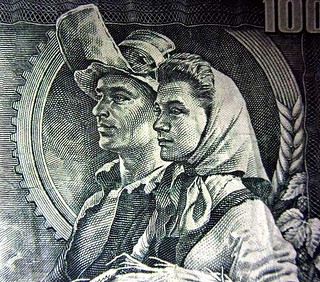 About the only thing you can say about the Czech paper money now in use is that it is more interesting than the bland euro designs.
About the only thing you can say about the Czech paper money now in use is that it is more interesting than the bland euro designs.
The currently valid Kč 100 note, with a somewhat somber oversized portrait of Emperor Charles IV and a background of a medieval architectural detail has only been in use since 1993. Its awkward colors and patterns are primarily for security, to make it hard to fake.
Before 1993, people had a truly unusual bill to spend, one that combined commerce and propaganda. The 1961 series of the 100 Czechoslovak crown note features the perfect couple on the right — a peasant woman with an armful of wheat with a male worker wearing some sort of protective visor. They are standing in a halo-like circle that is half wheat and half gear.
They are often referred to as smiling, but that is not exactly correct. They have a satisfied and contented look, not a plastic western smile.
They are gazing out over a miniature landscape of a mine, a factory and a nuclear reactor. A red and blue atom is behind the main text with the denomination written out in words — Bankovka státní banky československé / Sto korun československých 1961.
The back is a bit disappointing, an etching of Charles Bridge with a hammer and sickle.
While the notes bear the date 1961, they were in use from Dec. 2, 1962, until Feb. 7, 1993, or just after Czechoslovkia split up.
They were to be phased out in 1989, but the replacement notes with unpopular communist leader Klement Gottwald were rapidly removed from circulation after the Velvet Revolution, leaving the happy farmers in place until new notes could be made.

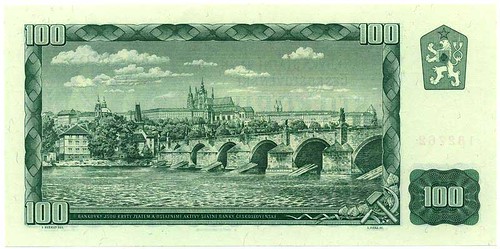
The 1961 series Kčs 100 note was in May of this year listed in British newspaper The Times as one of the six best paper money designs of all time, coming in fourth place. The list was made by Thomas Hockenhull, curator of modern money at the British Museum.
Hockenhull praised the Czechoslovak note for embodying communist ideals of hard work and prosperity so succinctly.
The design is by František Heřman, and the engraving by Jindra Schmidt, Jan Mráček and Ladislav Jirka.
To read the complete article, see:
#ThrowbackThursday :
The happy couple on Czechoslovak money
(www.praguepost.com/142-culture/50987-throwbackthursday-the-happy-nuclear-family-on-czechoslovak-money)
To read the Hockenhull article (subscription required), see:
Six of the best: banknotes by Thomas Hockenhull, curator
(www.thetimes.co.uk/tto/arts/article4452782.ece)
CHINA RELEASES SPACE PROGRAM BANKNOTES AND COINS
China's Central Bank released a special set of commemorative bank notes and coins on November 26 to celebrate the country's space achievements and progress in aerospace development.
The set includes a 100 yuan bank note and a 10 yuan coin, displaying various China's aerospace achievements in the past few decades.
According to Chinese media, China residents were able to make reservations using real names to purchase the news set of commemorative bank note and coin from November 10 to 25, with a limit of three coins and ten bank notes each.

The front side of the note above shows Dongfanghong-1, the country's first satellite which was launched in April 1970, the manned Shenzhou-9 spacecraft docked with China's first space lab, Tiangong-1, and Chang'e-1, the first lunar orbiter, launched in 2007.

The reverse shows, from left to right, advances in flight, from avian to the Feng Ru No. 2 biplane, constructed by and named after the first Chinese aviator, followed by an ARJ21 Xiangfeng "Flying Pheonix", China's first domestically-made jet airliner, the planned Chinese Space Station, set to be completed by 2023, and lunar orbiter Chang'e-1.
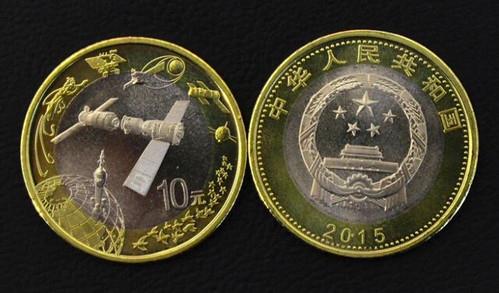
The reverse side of the coins (left) shows, starting on planet Earth on the bottom left, a Long March 2F carrier rocket which is used for China's human spaceflight missions and features the tell-tale launch escape system on top.
Moving clockwise, next is Zhinü, a weaver girl from Chinese mythology who forms a romantic legend with a cowheard named Niulang, in which they are separated by the silver river (Milky Way), but are reunited on 7th day of the 7th lunar month by magpies forming a bridge, illustrated on the bottom-right of the coin.
The move can be seen as another way in which China is trying to boost the popularity and profile of its space activities. In 2013 taikonaut Wang Yaping gave a lecture to 60 million school children from the Tiangong-1 space module, and China's Yutu rover was named via public vote.
On December 18 China will launch its DAMPE dark matter probe, which is expected be renamed through a public competition.
To read the complete article, see:
China releases space program banknotes and coins
(http://gbtimes.com/china/china-releases-space-program-banknotes-and-coins)

BANKNOTE PRINTER DE LA RUE ANNOUNCES CUTBACKS
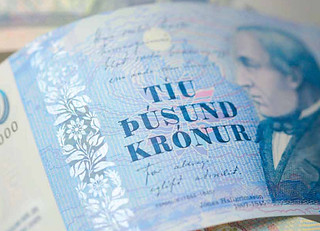 De La Rue will shut a printing press in Malta, with the possible loss of 300 positions, and reduce its total production capacity from eight
billion to six billion banknotes per year.
De La Rue will shut a printing press in Malta, with the possible loss of 300 positions, and reduce its total production capacity from eight
billion to six billion banknotes per year.
The FTSE 250 company proposed doing this by cutting the number of production lines from eight to four - leading to the closure of production in Malta.
The new system, which will use more efficient modern printing machines, will have the flexibility to produce seven billion notes a year if necessary, but anything above that will have to be outsourced to external partners.
Chief executive Martin Sutherland said: "As the leading commercial designer and printer of banknotes and passports, our manufacturing footprint review has identified significant opportunities for improvements in capability and efficiency".
The company has struggled in recent years, particularly due to the rise of contactless and cashless payments. Dwindling demand for banknotes intensified competition among the suppliers and put pressure on contract prices. NYSE Post
To read the complete article, see:
Banknote printer De La Rue axes production, jobs NYSE
Post http://nysepost.com/banknote-printer-de-la-rue-axes-production-jobs-63572
(http://nysepost.com/banknote-printer-de-la-rue-axes-production-jobs-63572)
It has a licence to print money, but De La Rue will produce much less of it after cutting half its production lines.
The move is designed to preserve the banknote printer’s cash while providing currency for the Bank of England and dozens of governments.
The restructuring is expected to save £13 million a year as De La Rue reduces annual printing capacity from eight billion notes to six billion.
Demand for cash is falling as more people use debit cards and mobile phones to pay for small items. The increasing use of longer-lasting polymer notes also has hit profits. De La Rue won a contract with the Bank of England last year to print “wipe-clean” polymer £5 and £10 notes in Debden, Essex, but the group has been hit by a glut of banknote paper as well as the lower value of the euro, which has boosted its continental rivals.
De La Rue, which traces its roots back more than 200 years, will close its banknote printing operation in Malta, although it will move its passport technology work from the northeast of England to the Mediterranean island as part of the restructuring. It will maintain its factories in Gateshead, Kenya and Sri Lanka. About 300 jobs are at riskin Malta and Gateshead, which will cost De La Rue £8 million.
To read the complete article, see:
More
plastic means less need for cash for De La Rue
(www.thetimes.co.uk/tto/business/industries/supportservices/article4630416.ece?shareToken=f4827e44fce901cdf50c2406b13ecebd)
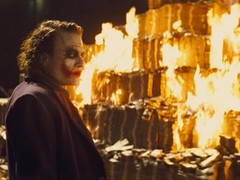 The move to cut cash production comes as economists begin to debate eliminating paper money altogether. It all comes down to negative
interest rates.
The move to cut cash production comes as economists begin to debate eliminating paper money altogether. It all comes down to negative
interest rates.
Central banks, particularly in Sweden and Switzerland, have targeted negative interest rates as a way to turn savers into spenders and get the economy moving. The logic goes that by making people pay interest to banks for keeping deposits, they will change their behaviour and spend the money it instead.
The only problem is that anyone can escape having to pay money on savings by taking it all out in the form of cash and hiding it in a shoebox somewhere, making the negative-interest-rate policy less effective.
The Bank of England's Andy Haldane and European Central Bank's Benoit Coeure have each identified cash as a problem for central banks wanting to push the boundaries of monetary policy.
So while De La Rue battles the rise of technology, there may be a bigger problem for bank notes and cash looming beyond that.
To read the complete article, see:
We got another
major sign that cash is dying
(www.businessinsider.com/de-la-rue-the-worlds-biggest-banknote-supplier-is-cutting-production-by-25-2015-12)
COUNTY INTAGLIO PRINTING PAPER SHORTAGE ENDS
 A shortage in the paper used to print birth certificates and the like in Stanislaus County is over.
A shortage in the paper used to print birth certificates and the like in Stanislaus County is over.
County Clerk-Recorder Lee Lundrigan announced in a news release earlier this month that her office has received banknote paper used to print certified copies of birth, death and marriage certificates. Restrictions on the number of copies people can get have been lifted, she said.
In August, the county restricted the number of certified copies it would issue after the company that printed the special paper used, Sekuworks LLC of Ohio, abruptly closed in July. California is among states that use the “intaglio” method for printing certified copies of birth, death and marriage certificates. Those states use paper with printed security features to prevent counterfeiting of vital records.
Lundrigan said the county has since found a Canadian supplier to print the banknote paper with the special security features. And the new product, she said, has more safeguards than its predecessor.
“Secure banknote paper protects your vital records against identity theft,” Lundrigan said in the release. “The new banknote paper has added security features to enhance the safety of vital records containing your personal and treasured information.”
To read the complete article, see:
New paper lifts records restrictions in Stanislaus County
(www.modbee.com/news/article47099215.html)
To read the earlier E-Sylum articles, see:
OHIO INTAGLIO SECURITY PRINTING FIRM SEKUWORKS CLOSES
(www.coinbooks.org/esylum_v18n31a27.html)
COUNTY ADAPTS TO INTAGLIO PAPER SHORTAGE
(www.coinbooks.org/esylum_v18n33a21.html)
UGANDA TO DEPORT COUNTERFEITER TO US
An American who has been on trial in Kampala for counterfeiting currency notes worth $180,400 will be deported to the US where he faces criminal charges, a Ugandan court ordered on Thursday.
US authorities in December 2014 charged Gustafson with leading a multimillion-dollar international counterfeit money operation based in Uganda. The US attorney’s office for the Western District of Pennsylvania said Gustafson mainly lived in Texas and Colorado when he was in the US.
Gustafson was arrested on 11 December 2014 in Kampala. Printers and other equipment used to make high-quality fake $20, $50 and $100 bills were also seized.
Authorities said he allegedly made more than $2m in US currency, most of it passed in Uganda, but about $270,000 of which was shipped to the United States.
The scheme reportedly unraveled when a fake $100 bill passed at a Pittsburgh coffee shop last December was detected by bank employees, authorities said.
Investigators said they traced that bill to a Pittsburgh man and further investigation determined Gustafson was shipping the bills to others in Florida, Minnesota, Texas and Washington. They said about $30,000 in counterfeit bills was passed in the Pittsburgh area.
To read the complete article, see:
Uganda to deport US citizen
charged in counterfeit money scheme (www.theguardian.com/world/2015/dec/03/uganda-deport-american-counterfeit-money-operation)
To read the earlier E-Sylum article, see:
UGANDAN COUNTERFEITS FLOWED THROUGH PITTSBURGH
(www.coinbooks.org/esylum_v17n52a30.html)
THE BOOK BAZARRE
ARTICLE HIGHLIGHTS SANTA CLAUS BANKNOTES
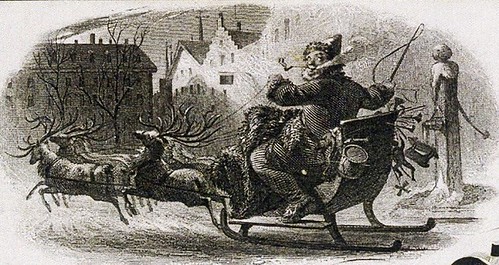
With Christmas only a few weeks away, retail stores are already filling with red-and-green–themed candies, wrapping paper, ornaments, and special gifts for eager shoppers. Classic songs liked “Rudolph the Red-Nosed Reindeer” and “Silver Bells” will be piped through Muzak and home radios. My mom will already be tearing up to the song “The Christmas Shoes,” and I already have the house decorated and all the presents wrapped. I always wait until after the Thanksgiving holiday has come and gone before jumping into the Christmas spirit…but just barely!
And as people begin their shopping for whichever holiday they may celebrate during the winter season, I wonder if the snowflakes and bells affect the numismatic market, too? For example, do the ever-popular “Santa Claus Notes” of obsolete paper money get special attention at this time of year?
The obsolete bank notes bearing vignettes of Santa Claus are a collectible specialty all their own. Some people collect by state or town, others by theme, and the Santa notes are no exception. Santa first appeared on bank notes in the mid-1800s, when Christmas was “declared an official holiday in many northern states . . . and some banks celebrated by creating Santa Claus currency.”
The notes quickly became keepsakes for those who carried them, and their popularity continues today. Roger Durand, in his Interesting Notes series, dedicates an entire volume to “About Christmas” (1993), where he declares that “It has been said that the value of all obsolete bank notes of the same rarity should be the same . . . except for Santa Claus notes. They are in a class of their own.” Sadly most of these notes are extremely rare, only adding to their coveted status. Heritage Auctions reports that in 2011 a Santa Claus note in circulated condition sold for more than $40,000! In the obsolete paper money world, that is enormous.

To read the complete article, see:
Currency With A Little Holiday Cheer
(http://news.coinupdate.com/currency-with-a-little-holiday-cheer/)
COMPANY BUILDS AUTOMOBILE VENDING MACHINE
 The neighbors have fielded questions for months as the five-story steel and glass structure started to rise from the ground: "What is
that?"
The neighbors have fielded questions for months as the five-story steel and glass structure started to rise from the ground: "What is
that?"
"We just reply that it's a car vending machine," said Anje Clay, who works at the import auto shop next door.
Now that the vehicle dispenser is operational, the online auto retailer can answer for itself. Carvana officials said their brick-and-mortar retail location in Nashville is more than a head-turning gimmick. This city got the first of this design, but the Phoenix-based company plans to put these vending machines in many of its markets, which currently stretch from Dallas to Raleigh-Durham. Atlanta has a more modest version.
"It’s surprisingly practical," Carvana CEO Ernie Garcia said.
Like any vending machine, this one takes coins. But they’re just for show. Drop the oversized Carvana token in the slot, and the gears start turning inside. A platform rises from the floor and stops at the correct level. The German-engineered robotics pull the car over. The SUV or sedan drops down, sliding over into a bay for pick-up by the customer.
Here's why Garcia said this spectacle makes sense: with its by-the-interstate location and pulsating neon lights, the vending machine doubles as a Carvana billboard.
The second reason Garcia said this makes sense: it may save Carvana money on shipping, which is the make or break line-item for an online dealership.
Home delivery costs Carvana about $200 per vehicle. The company is still offering that service — free of charge. But Garcia, the CEO, is hoping some buyers will be willing to drive to this central location instead. They still purchase the car online. But before they arrive for the pick-up, it’s loaded into the vending machine to create some drama around the transaction.
“When a customer comes here, they save us money by not making us go drive to them," he said. "Then we’re able to take that savings and invest it in an experience that we think is really fun for them.”
Garcia won’t say how much this German-engineered car vending machine cost him to design and build, only that it was less than the typical start-up investment for a car lot. And, he added, there’s a repairman on standby. That way, he never has to put up the dreaded “out of order” sign on this vending machine.
To read the complete article, see:
Car 'vending machine' built
to save on delivery costs (www.marketplace.org/2015/12/04/business/car-vending-machine-built-save-delivery-costs)

